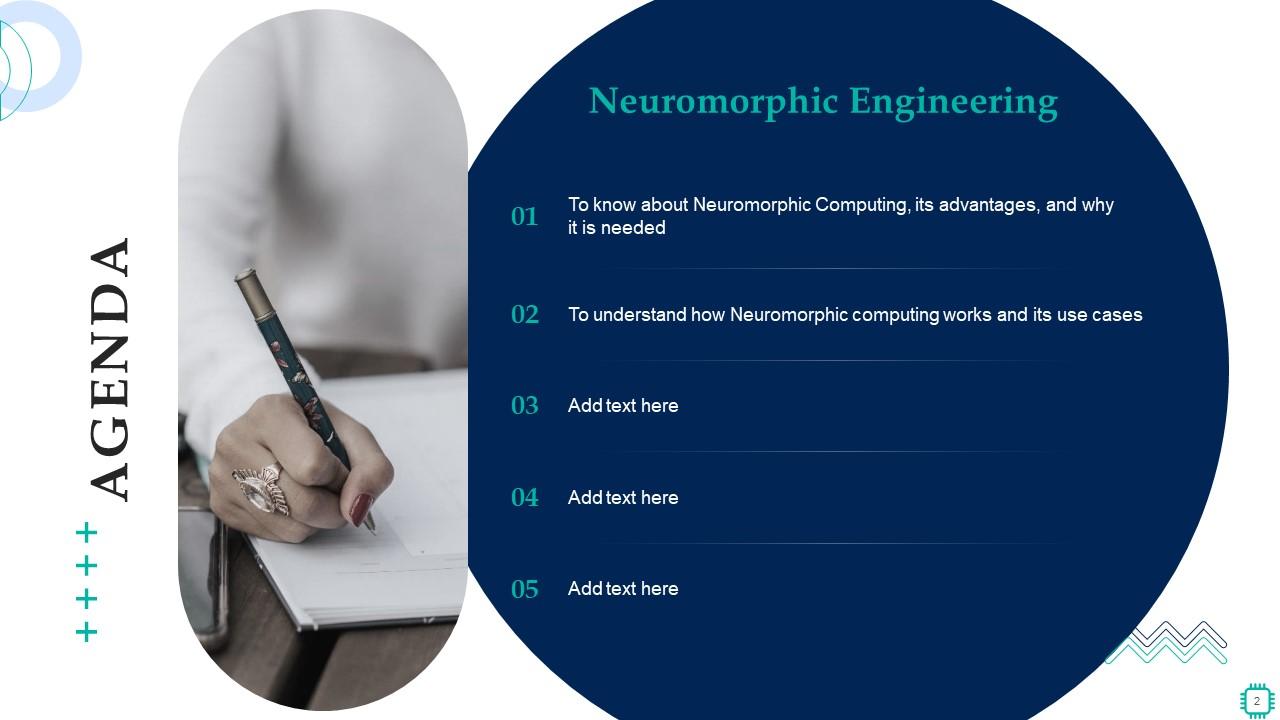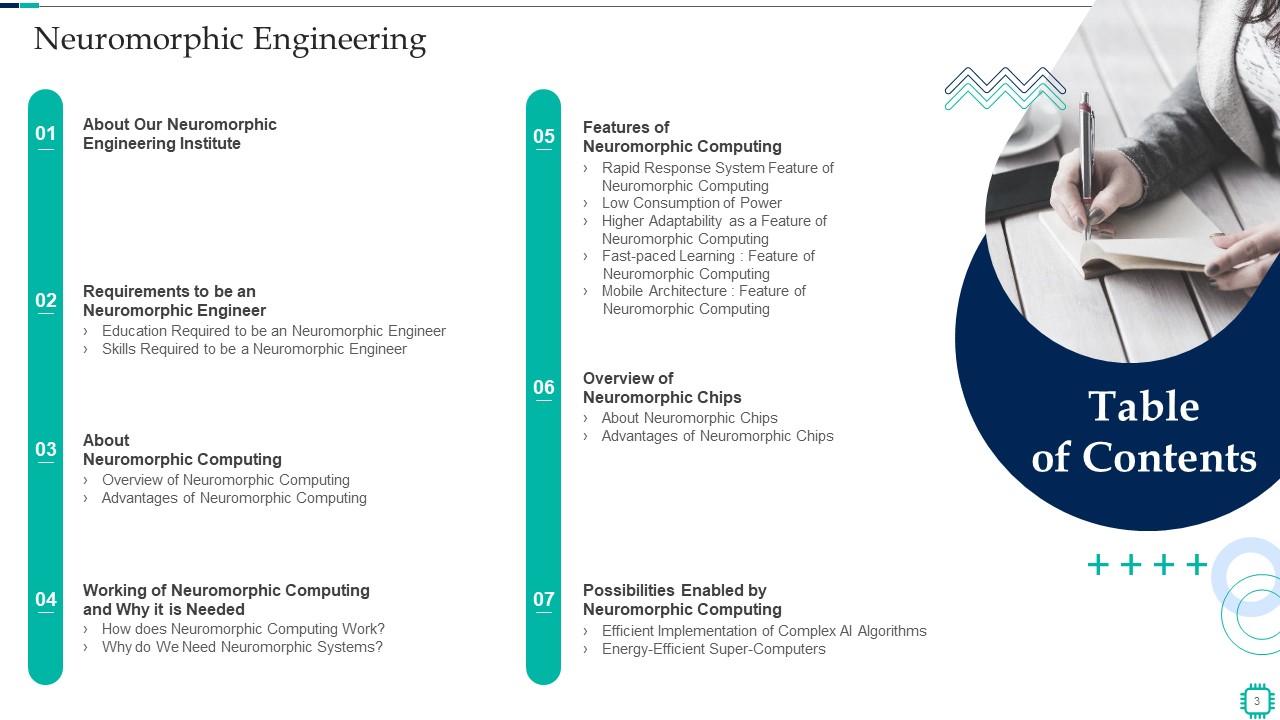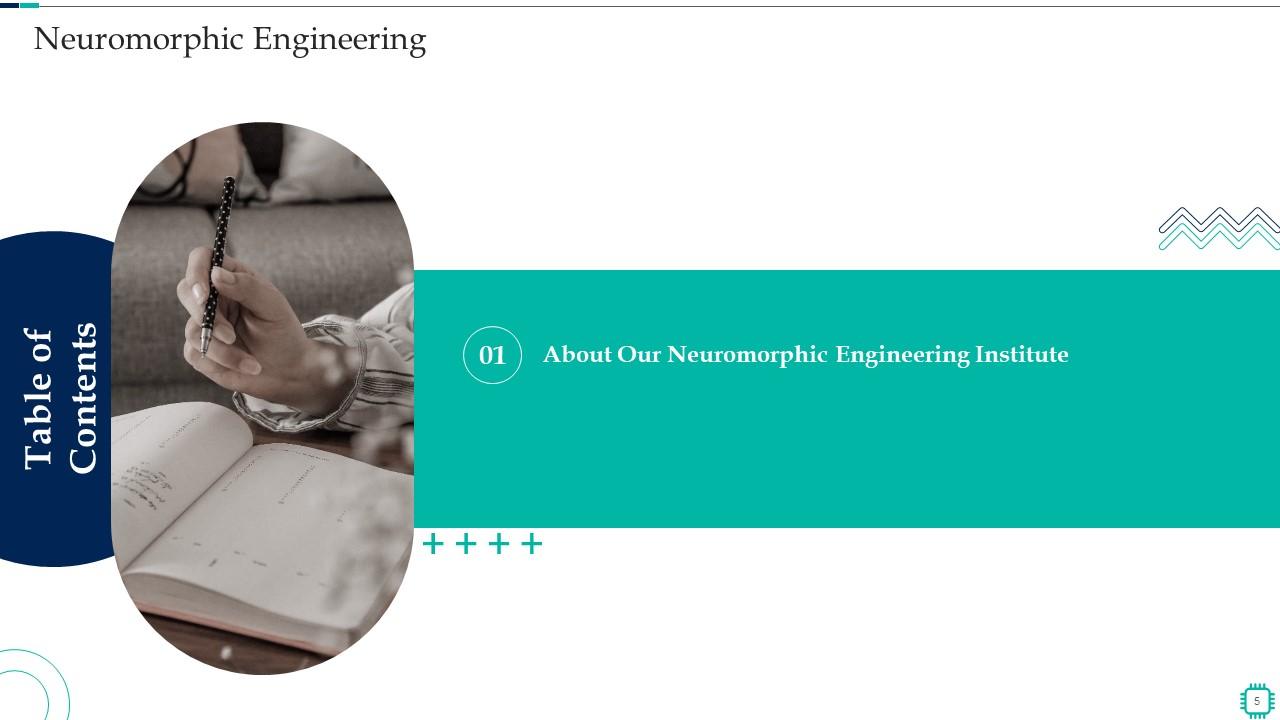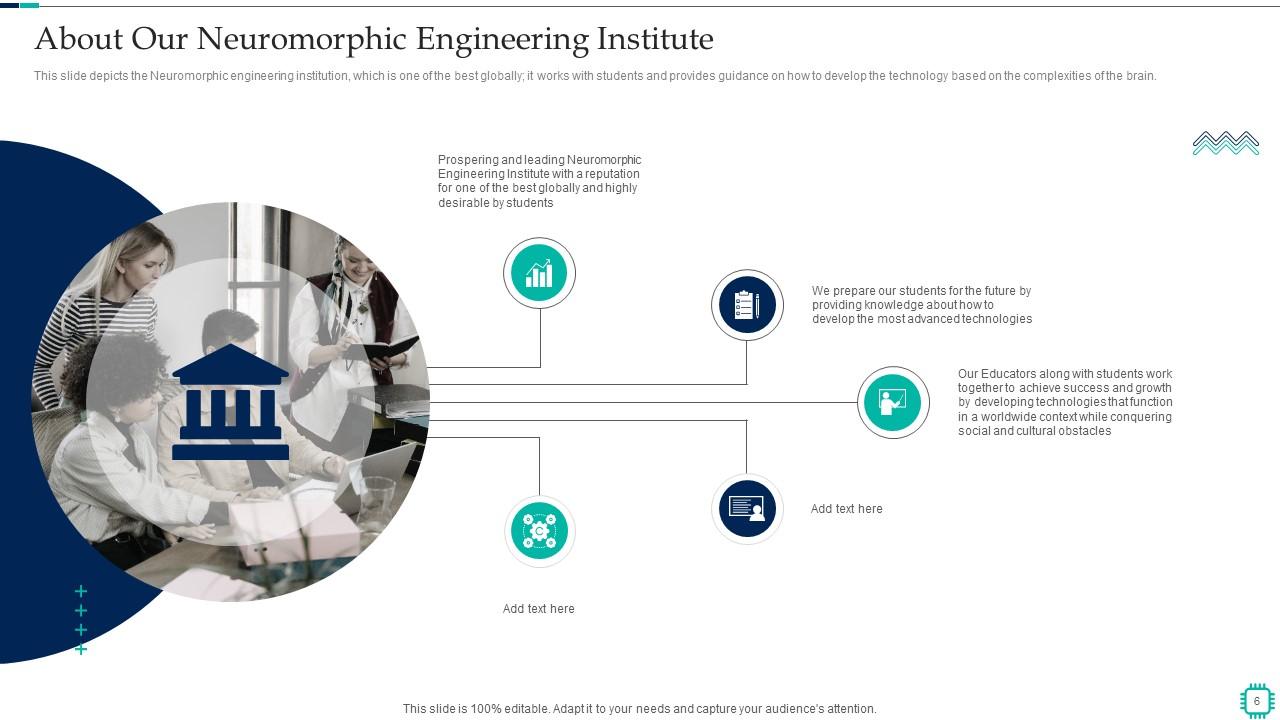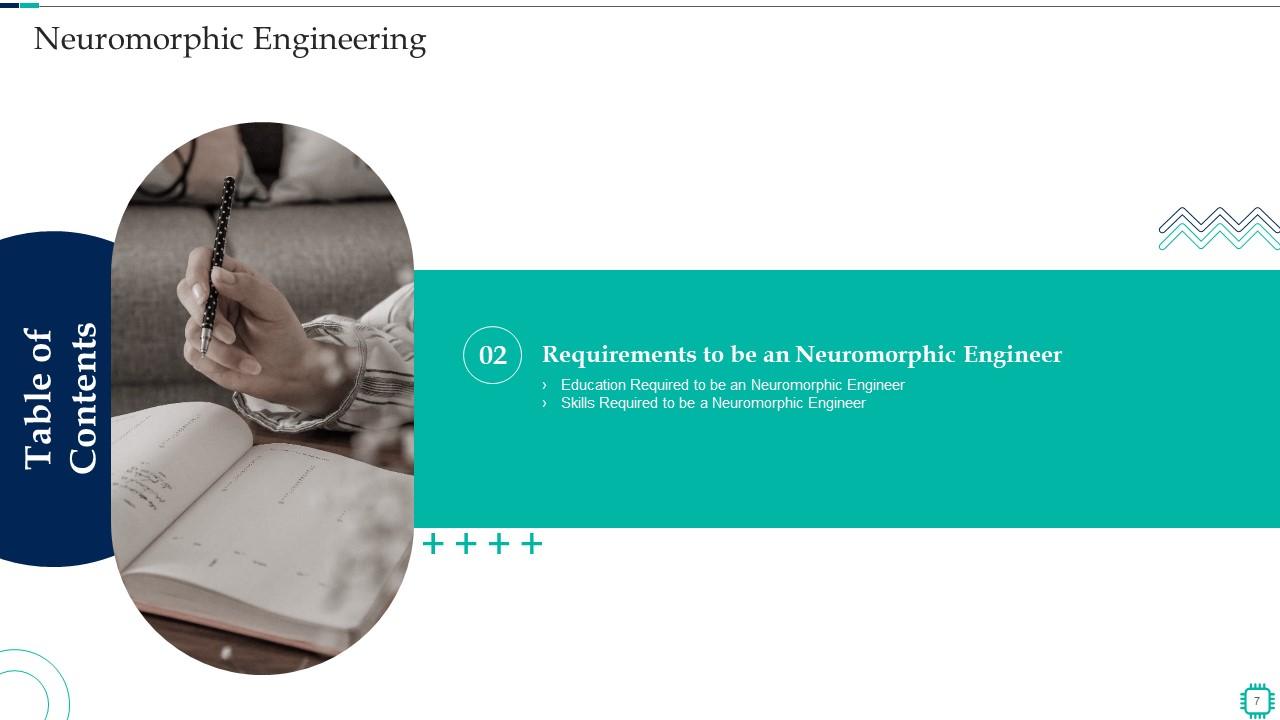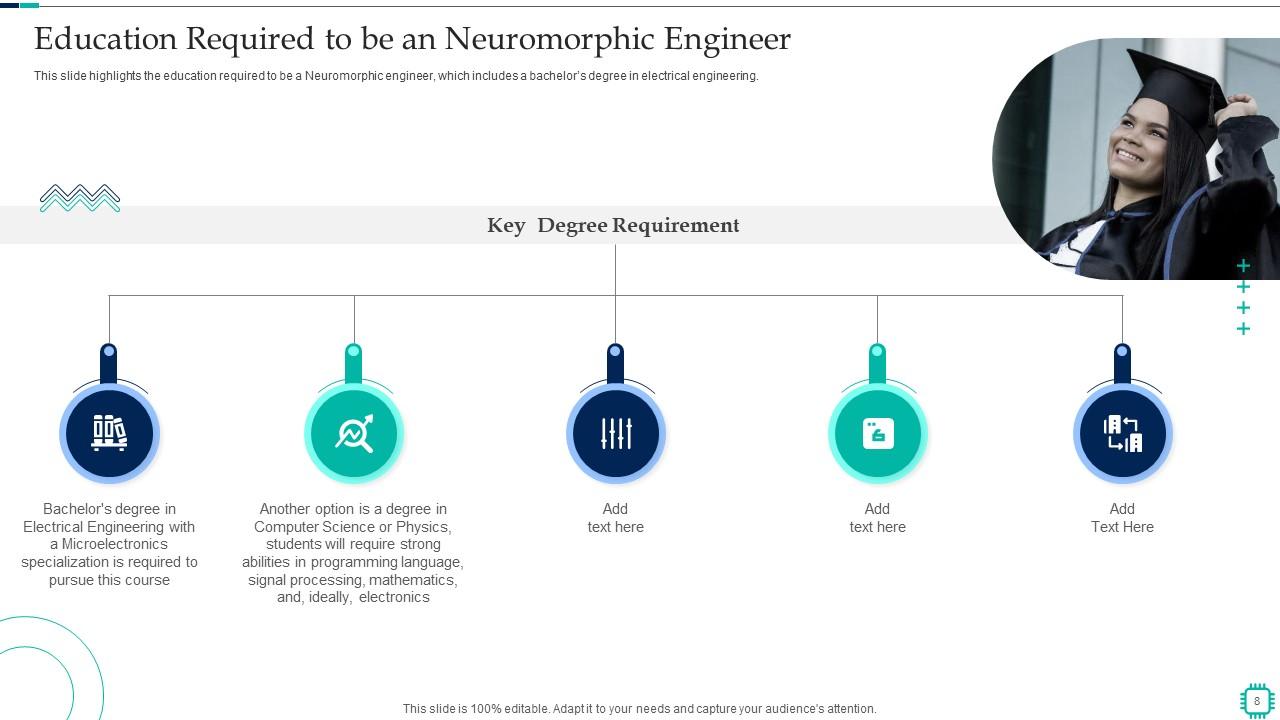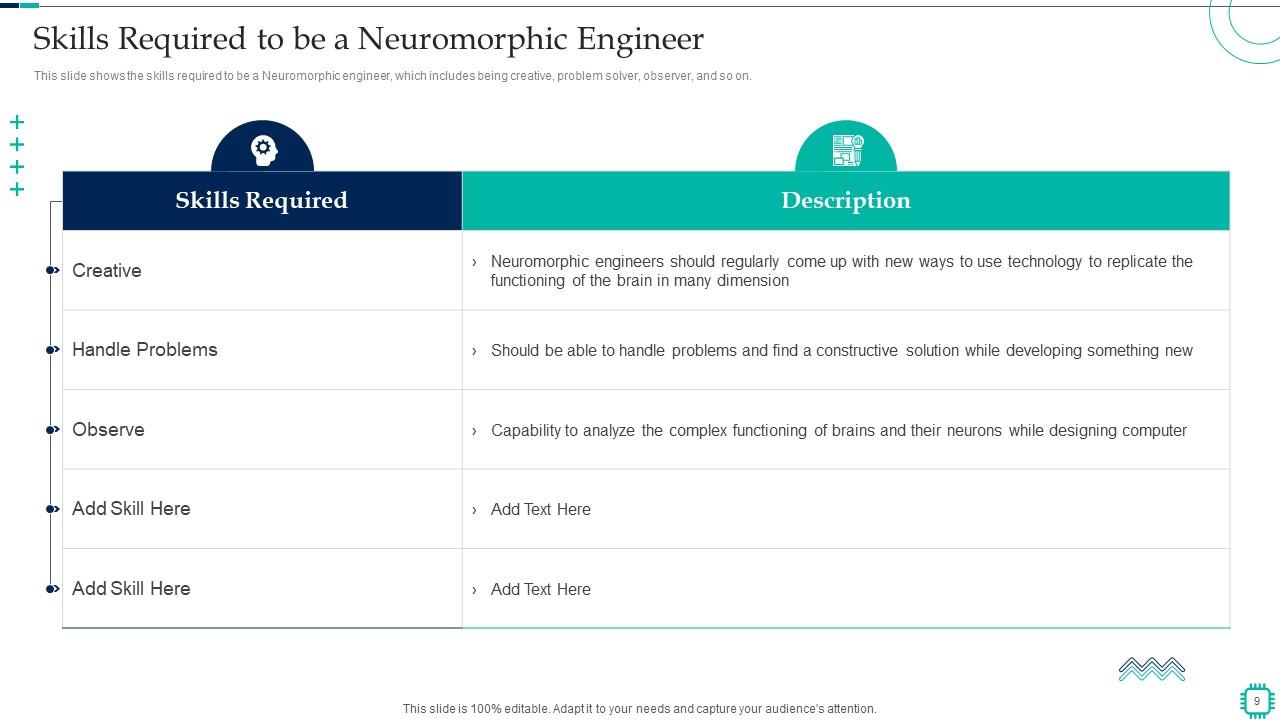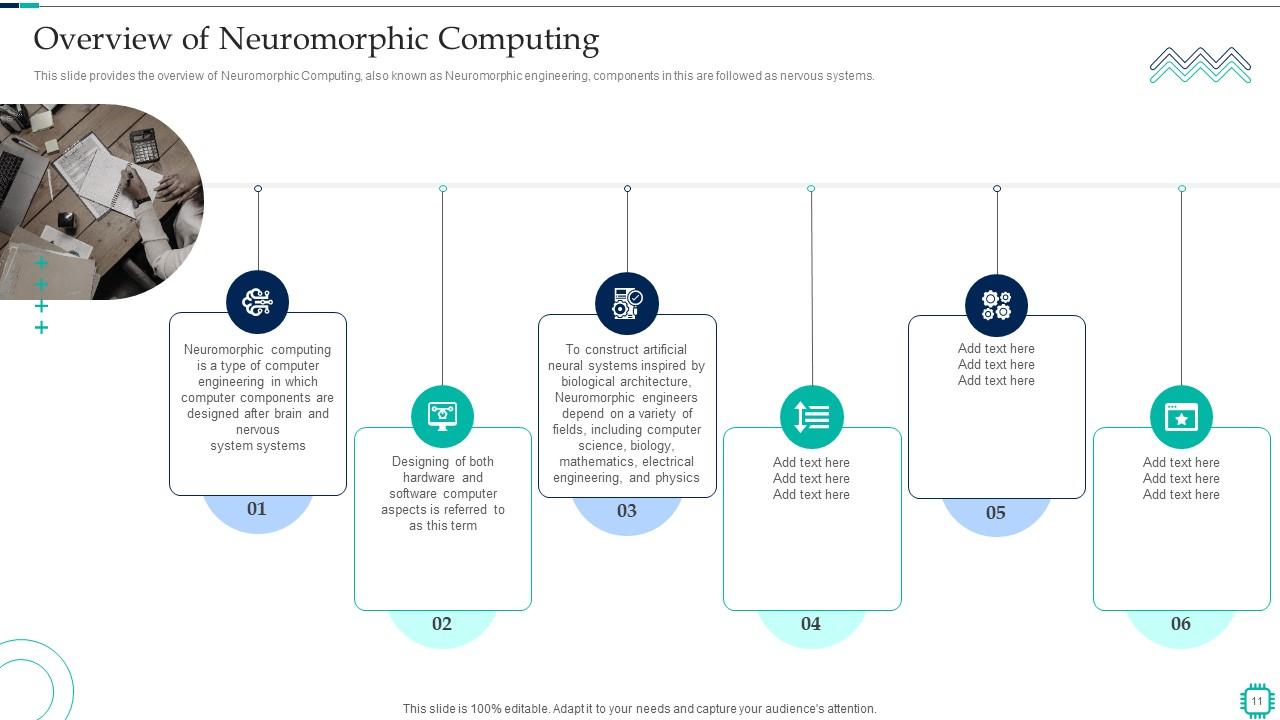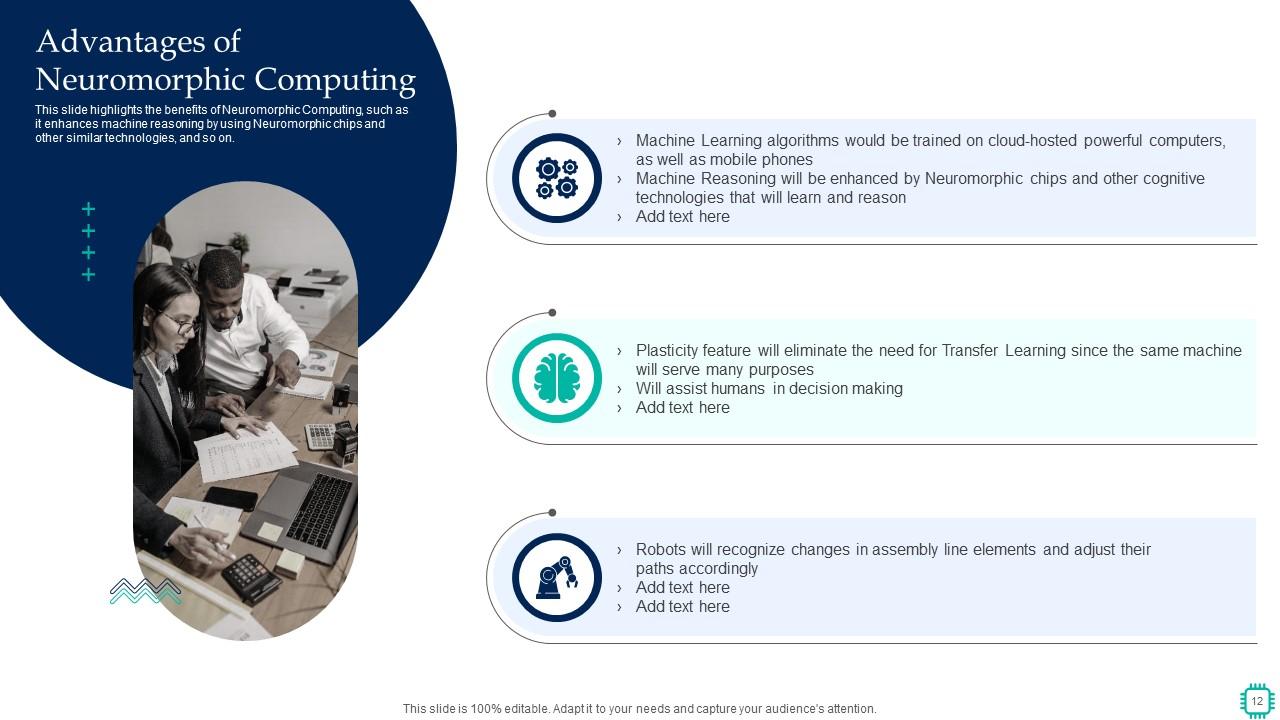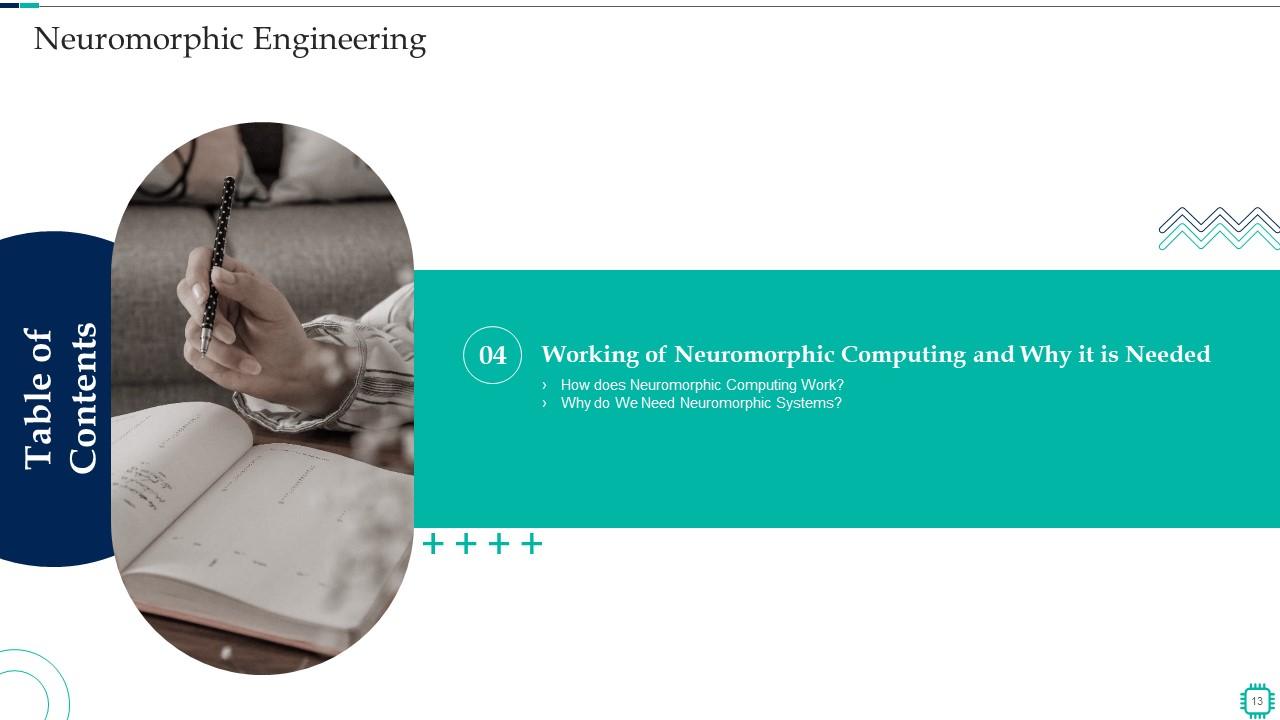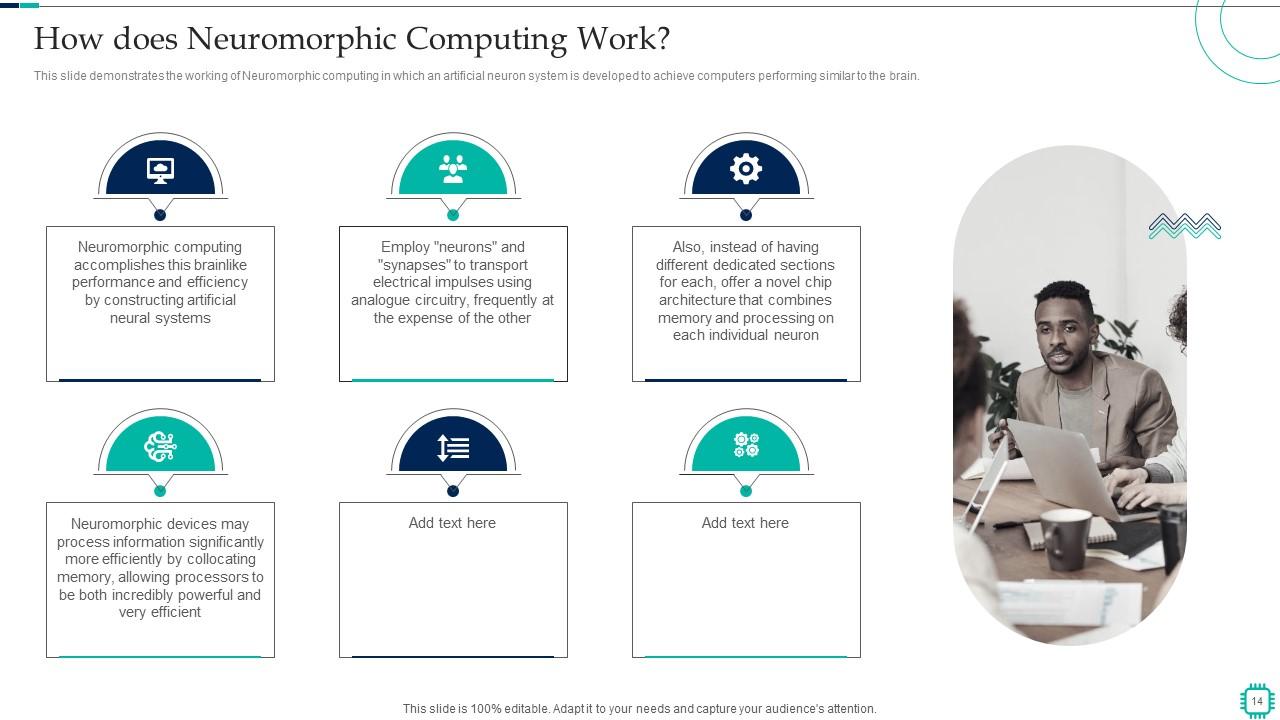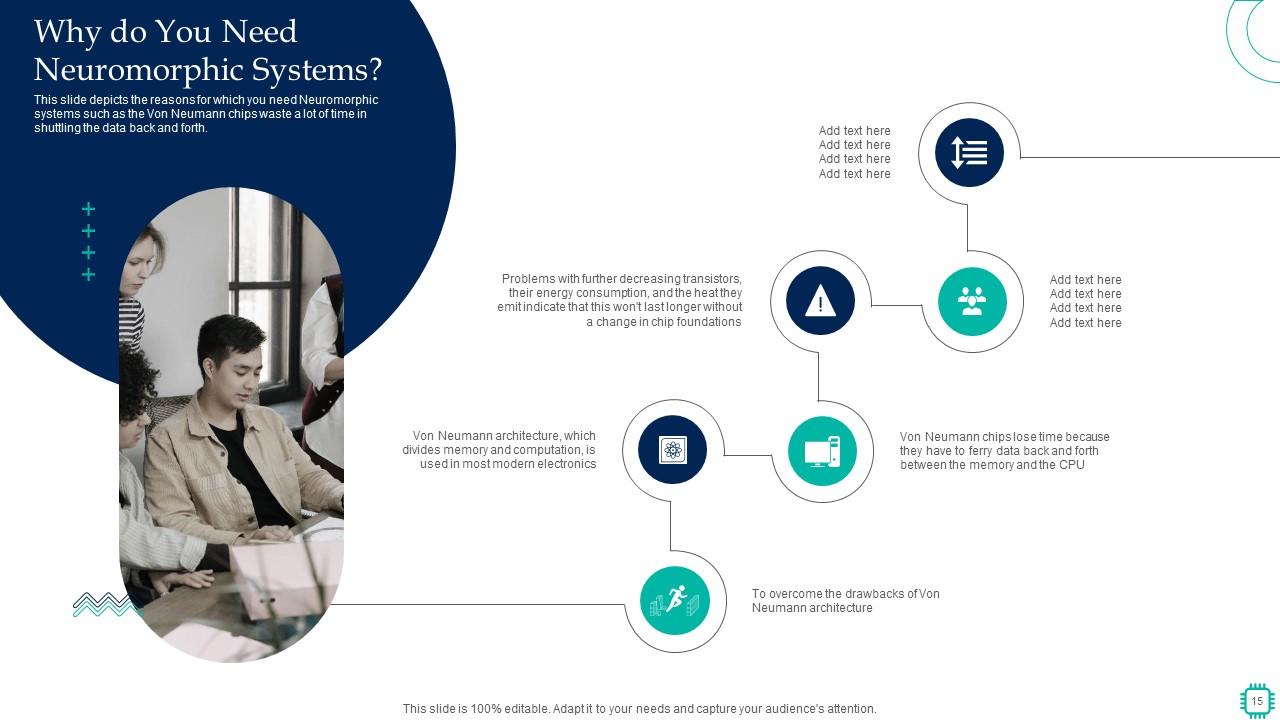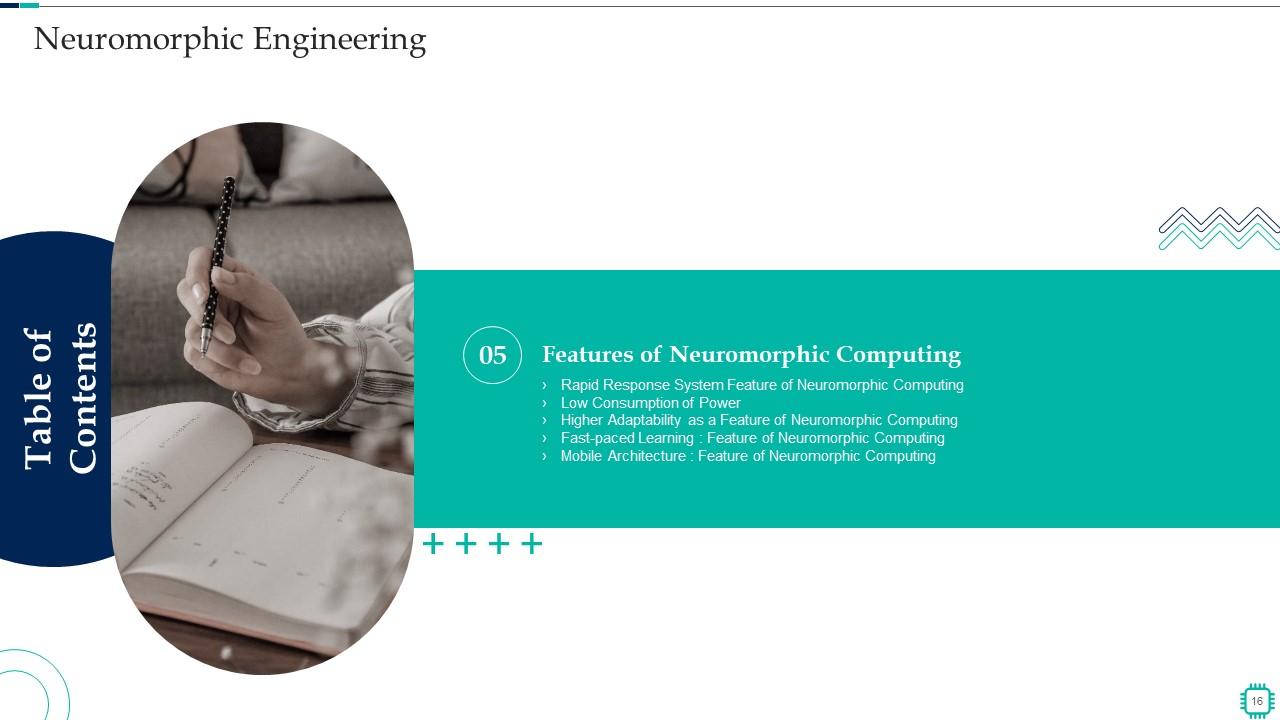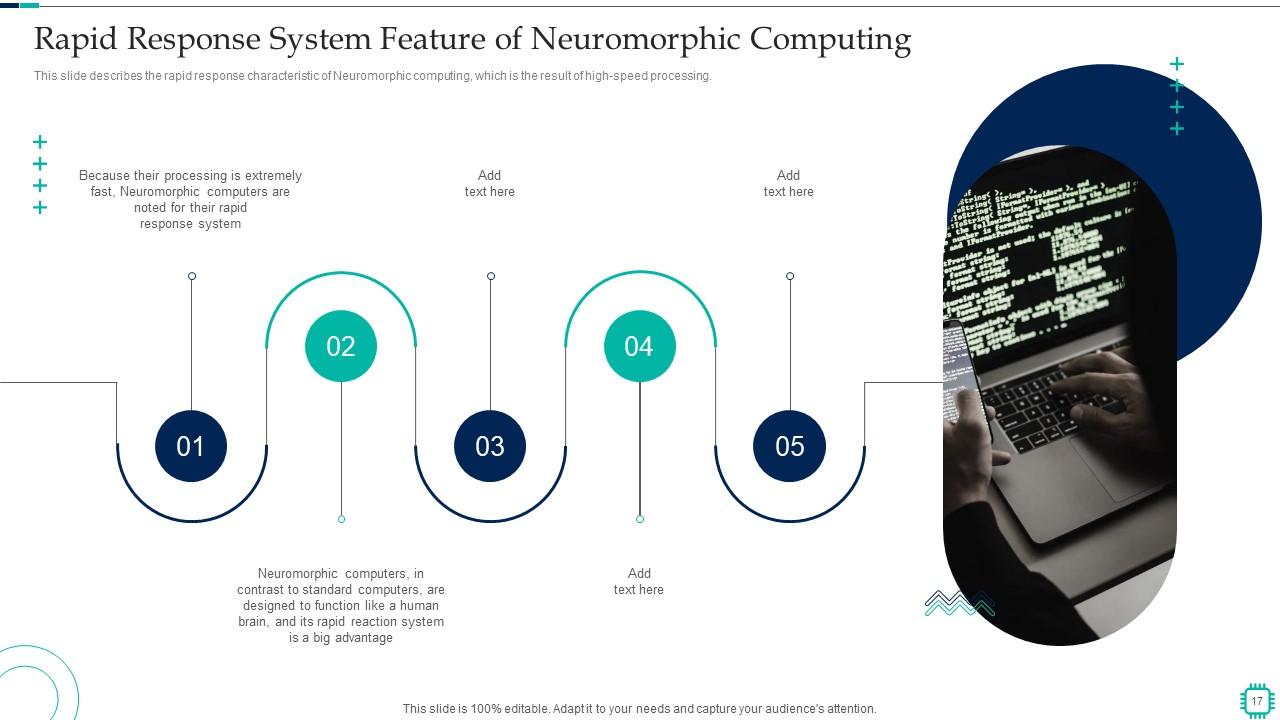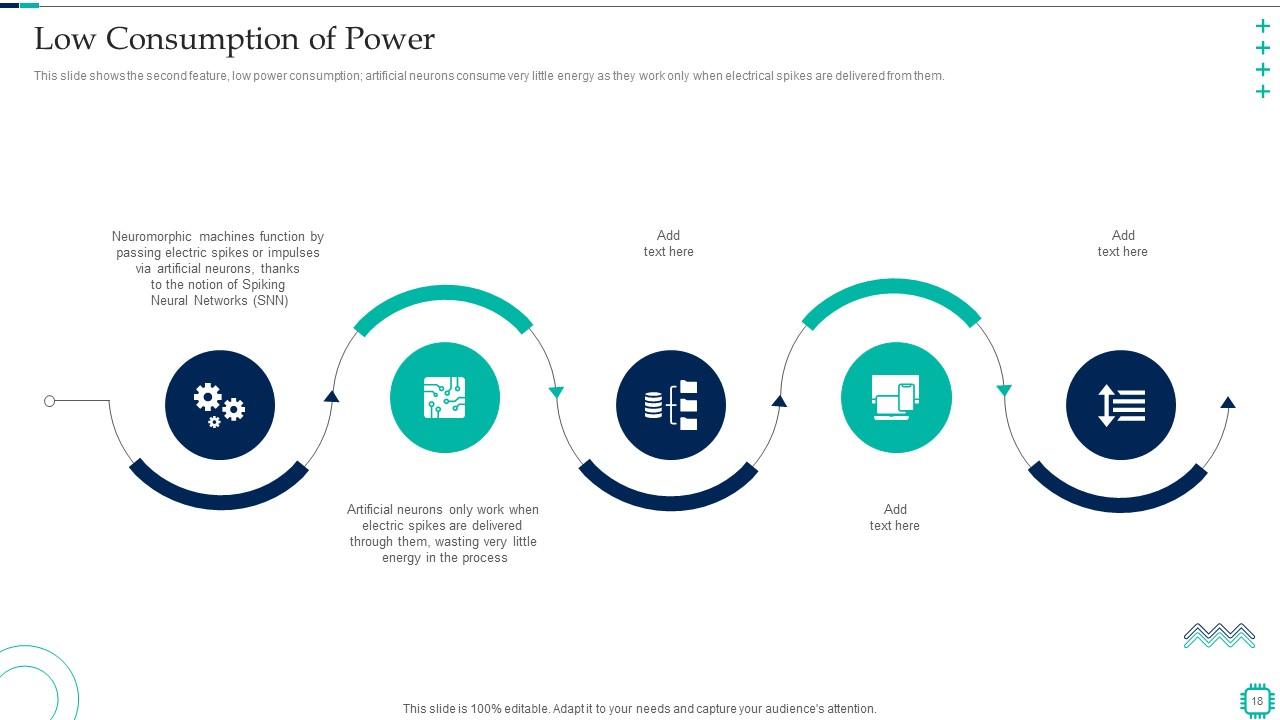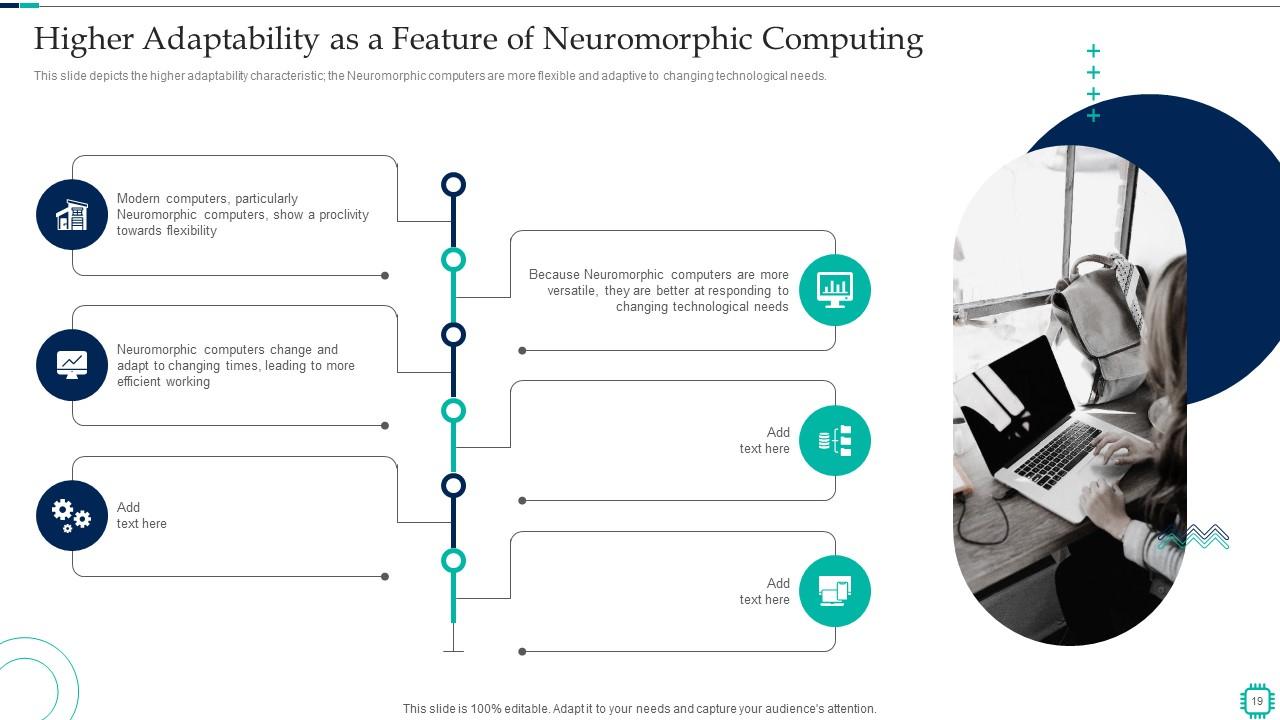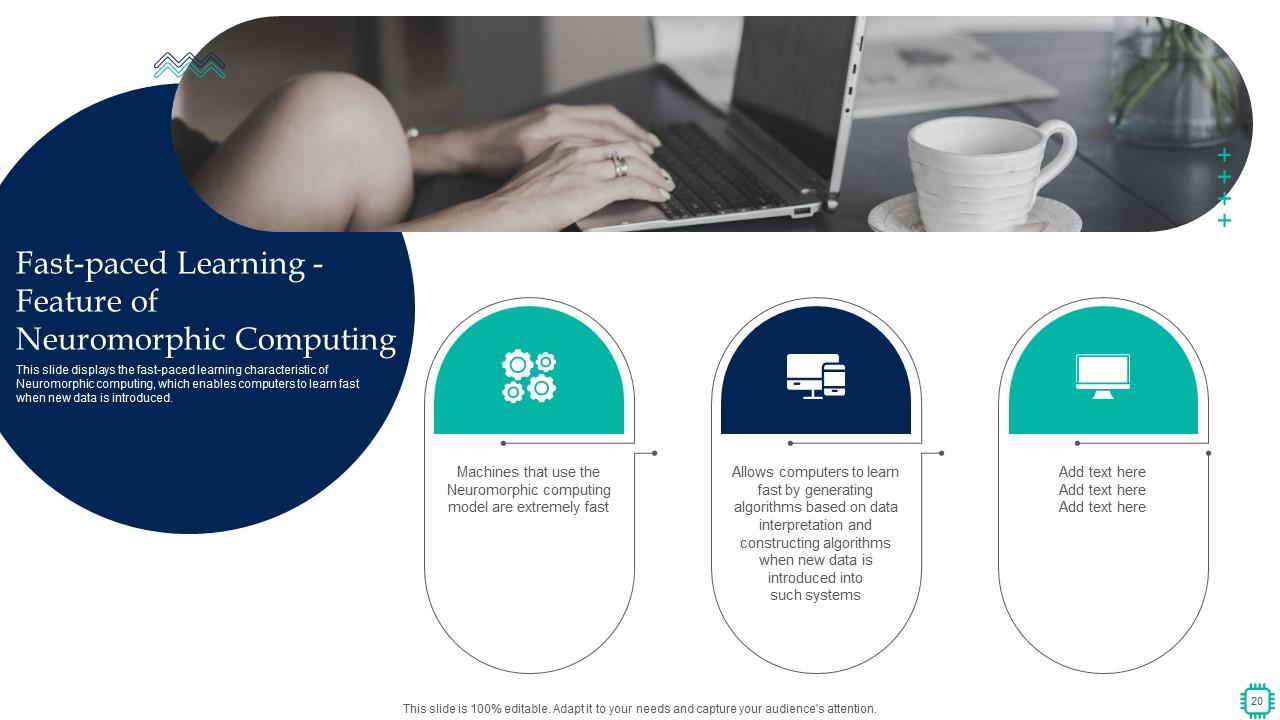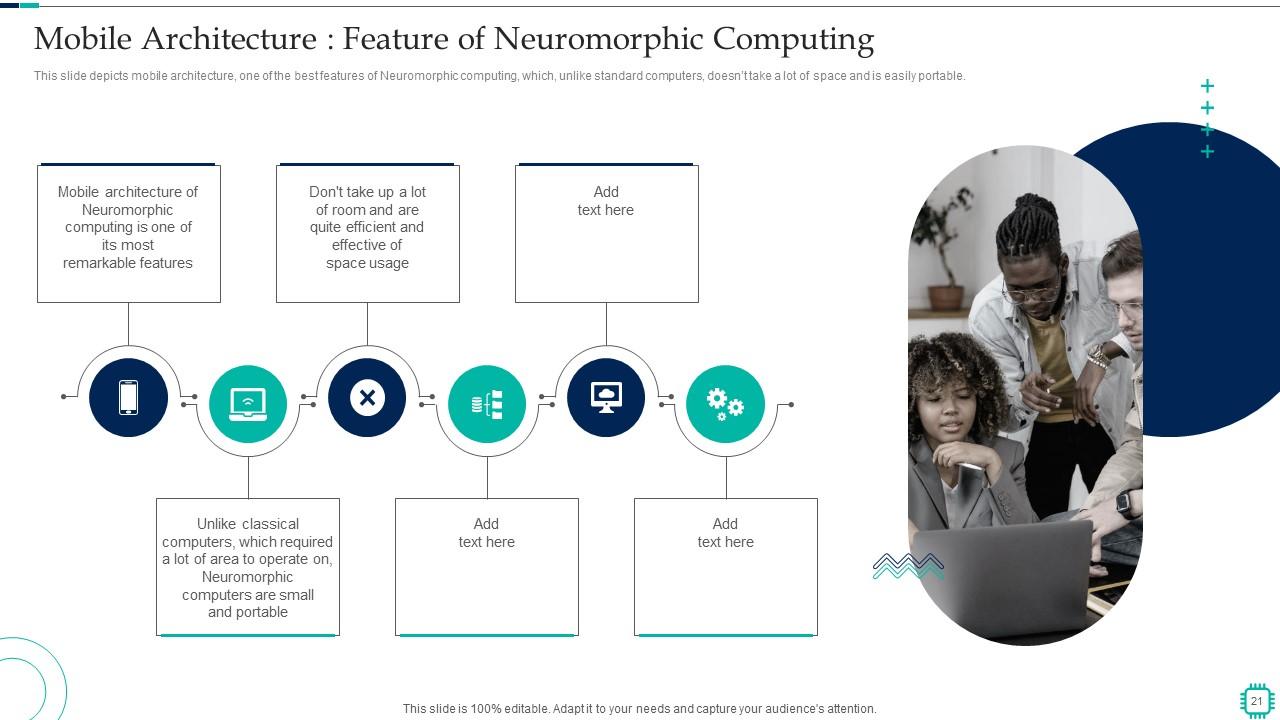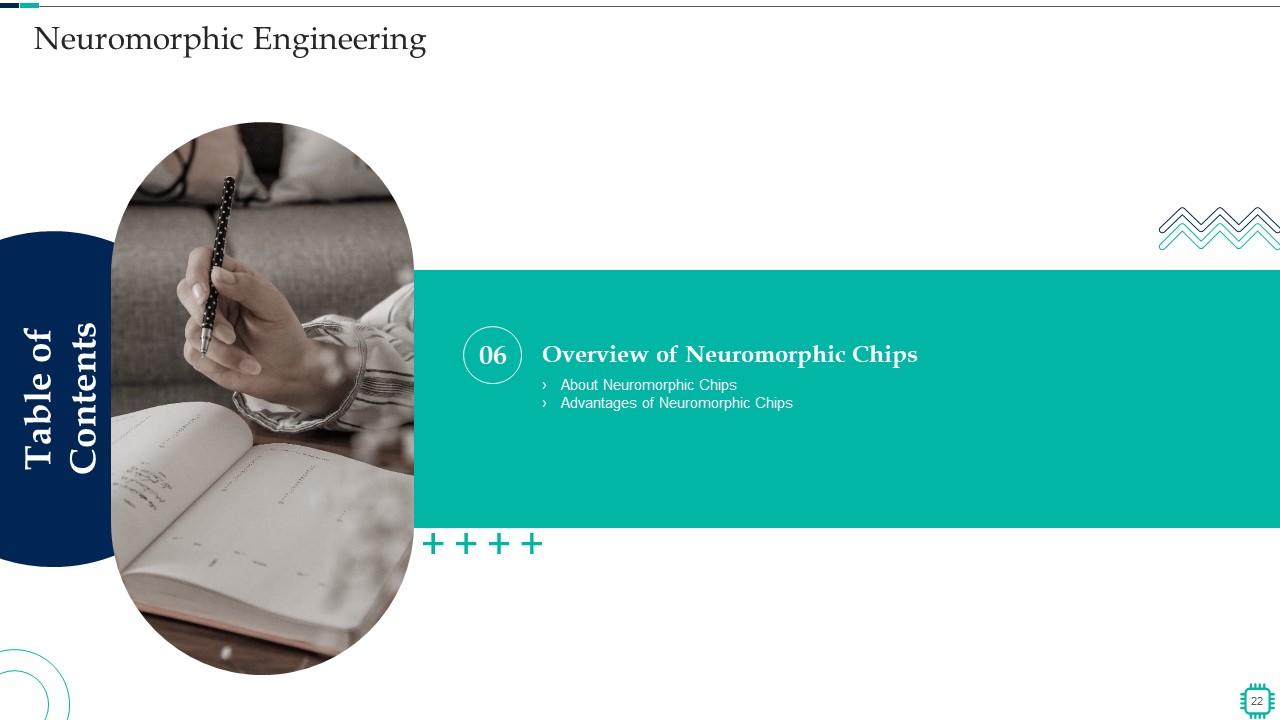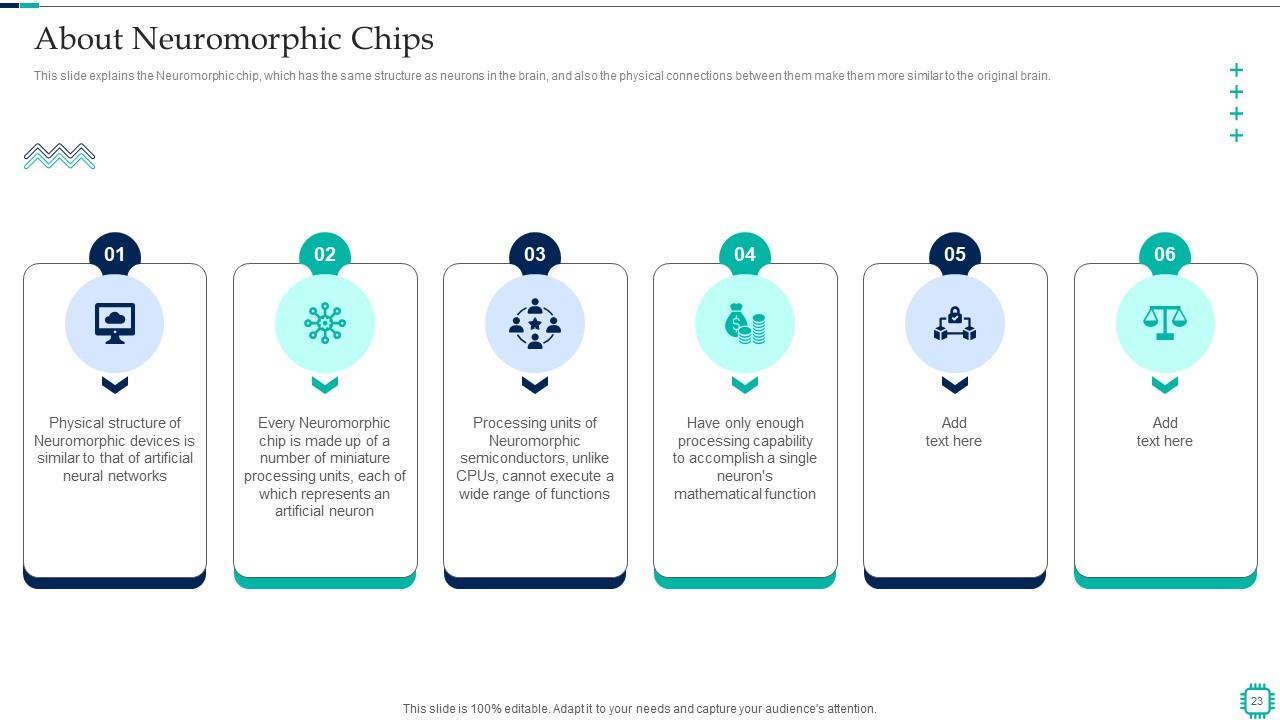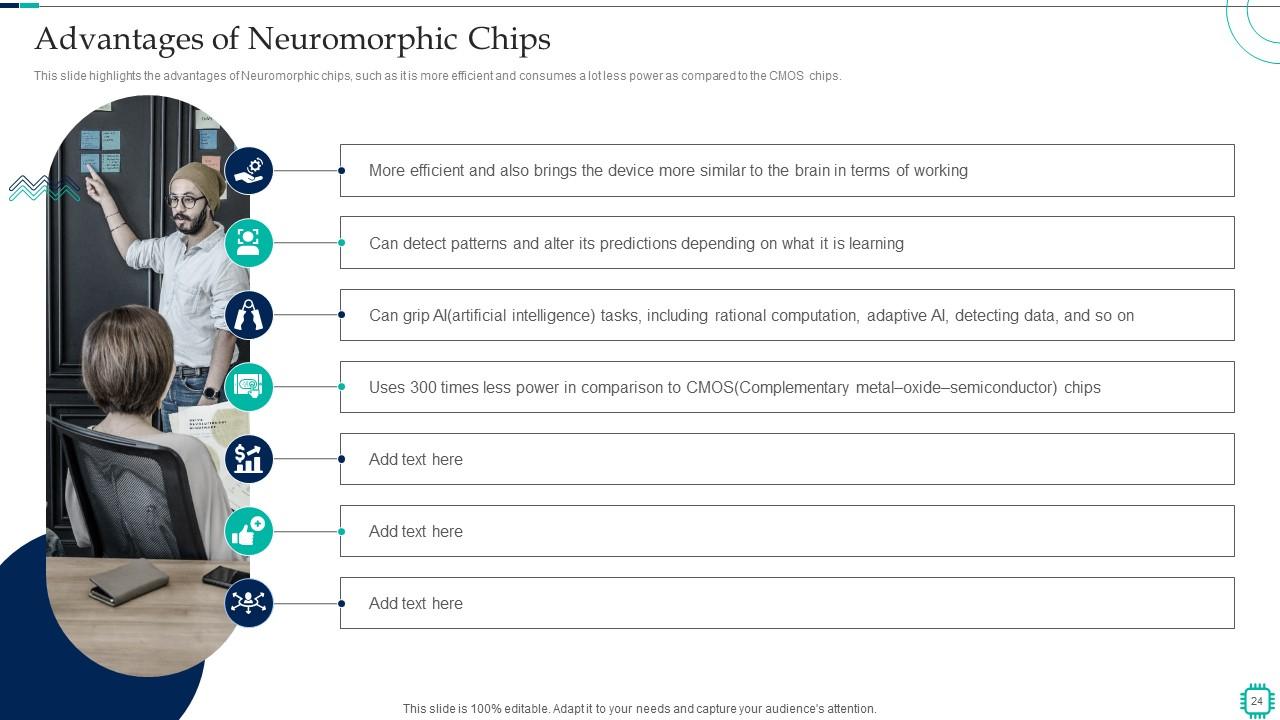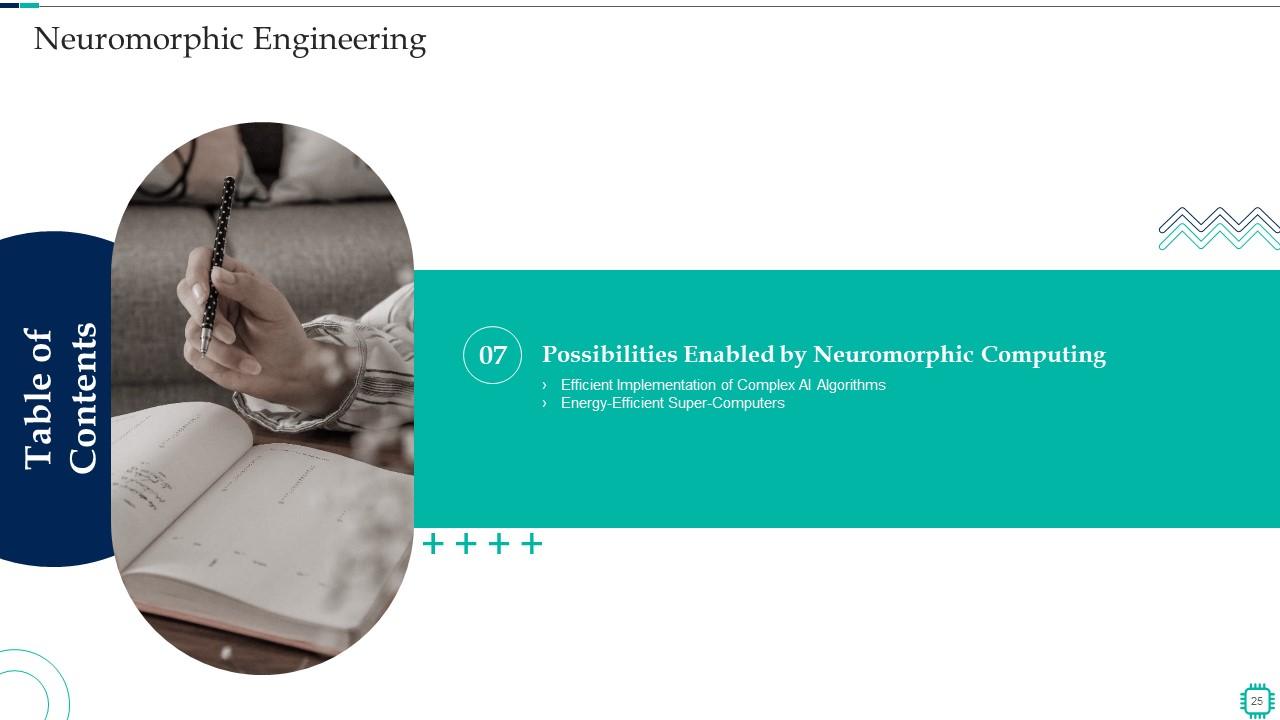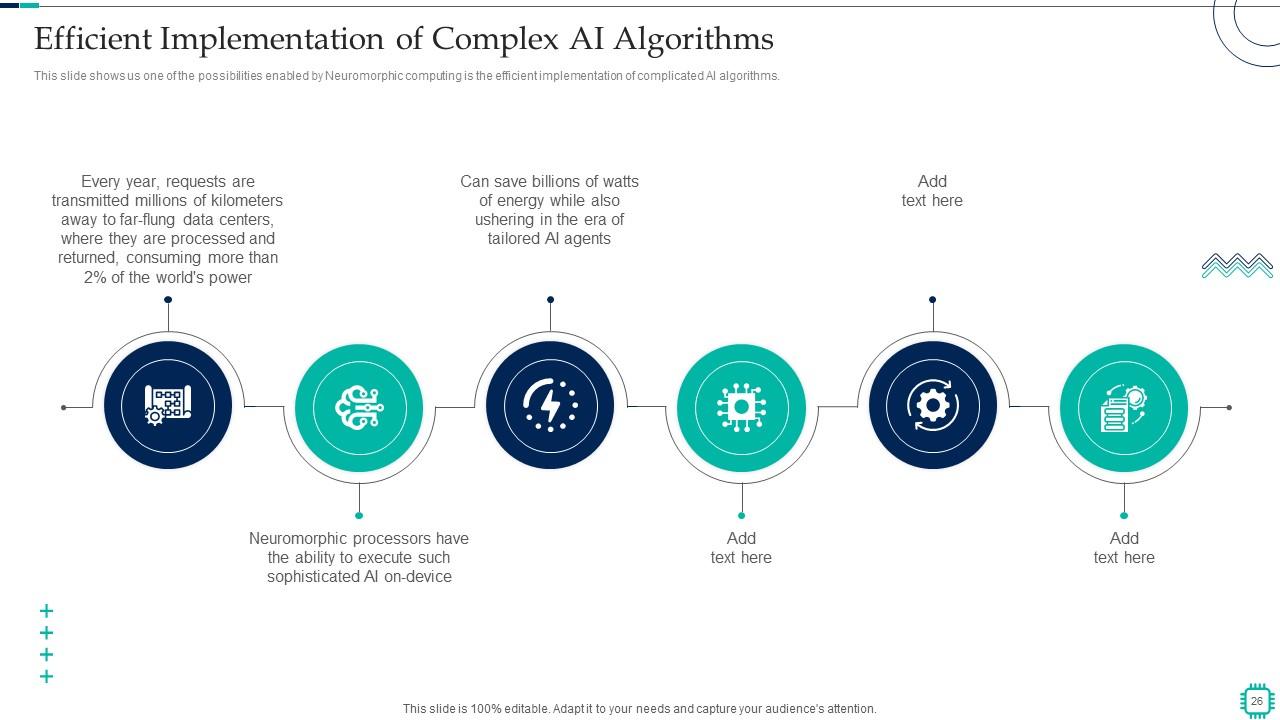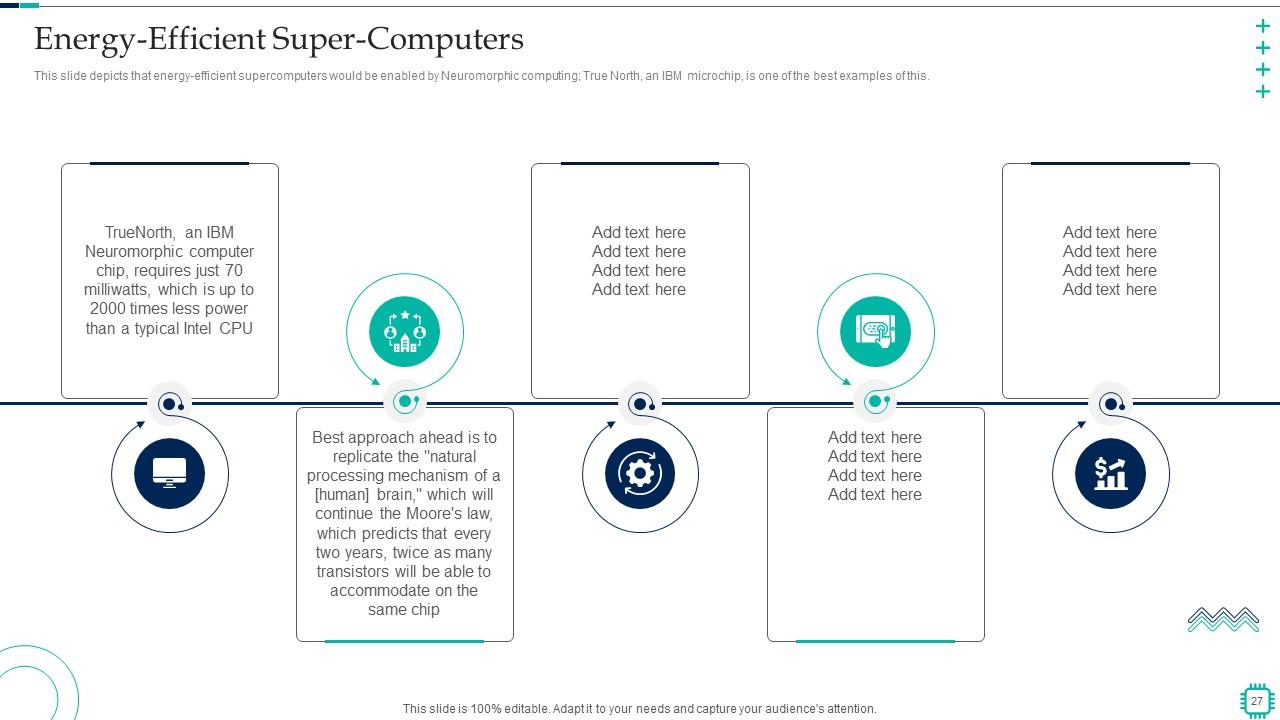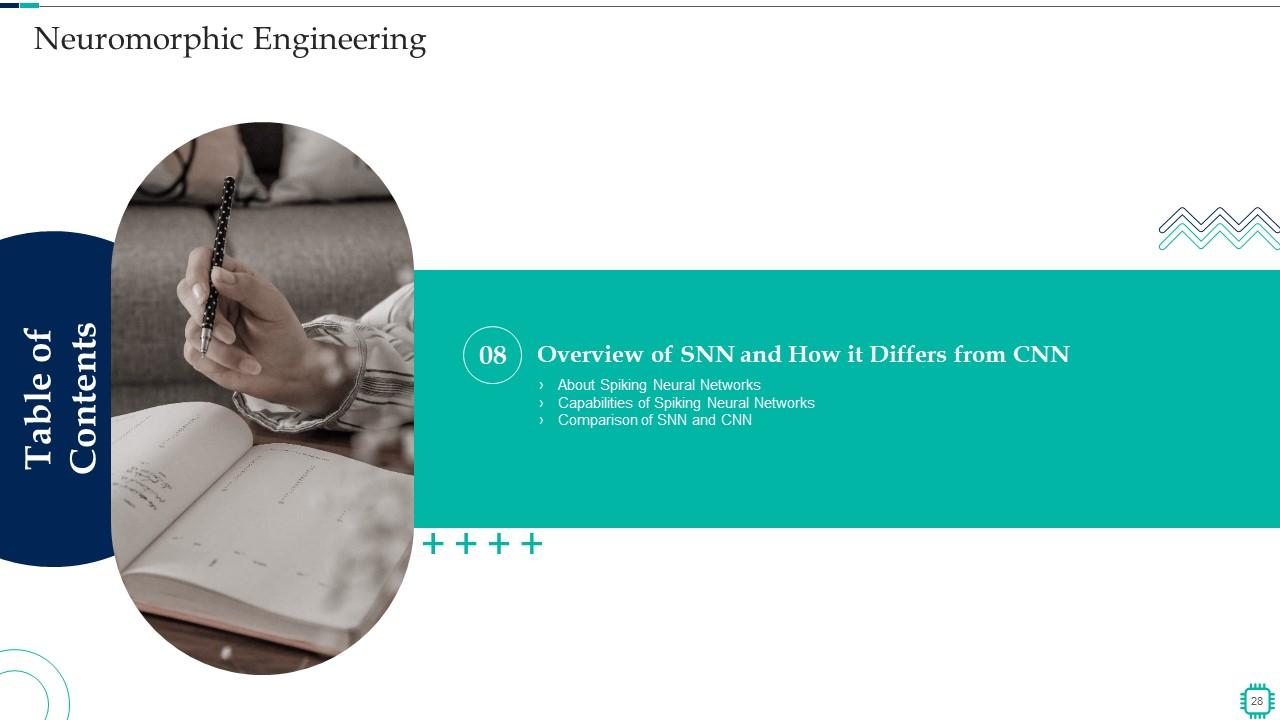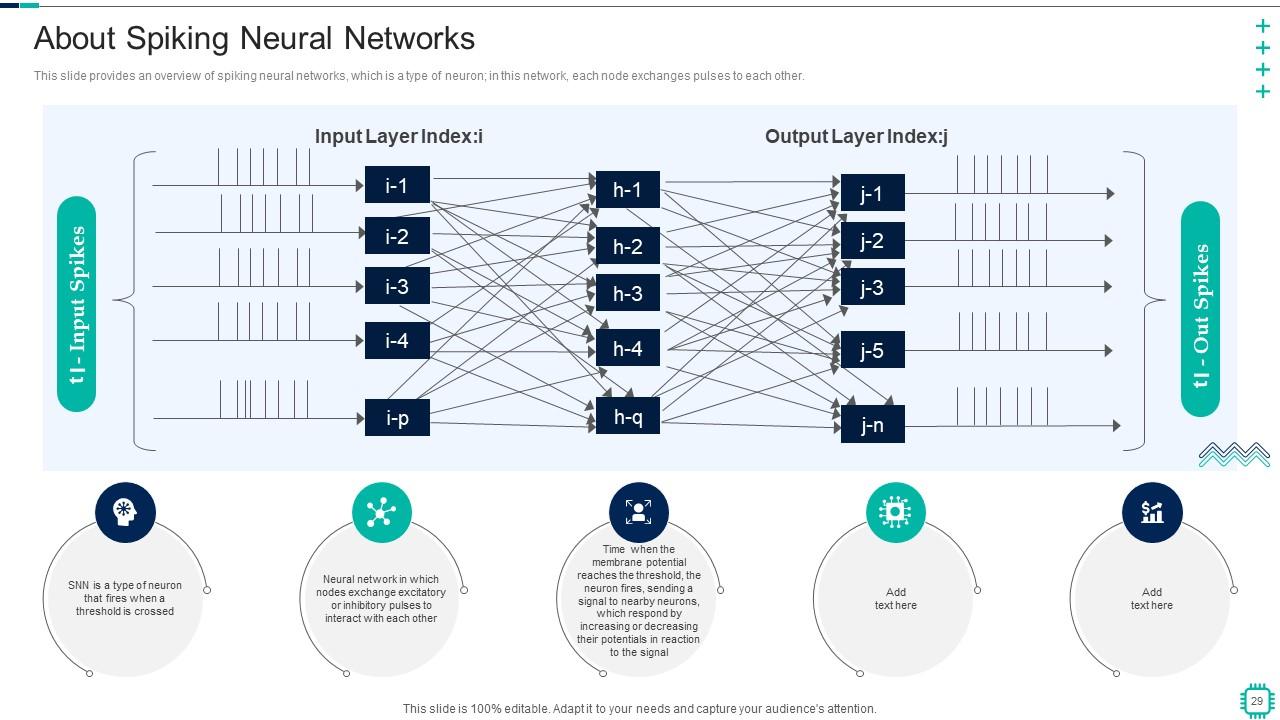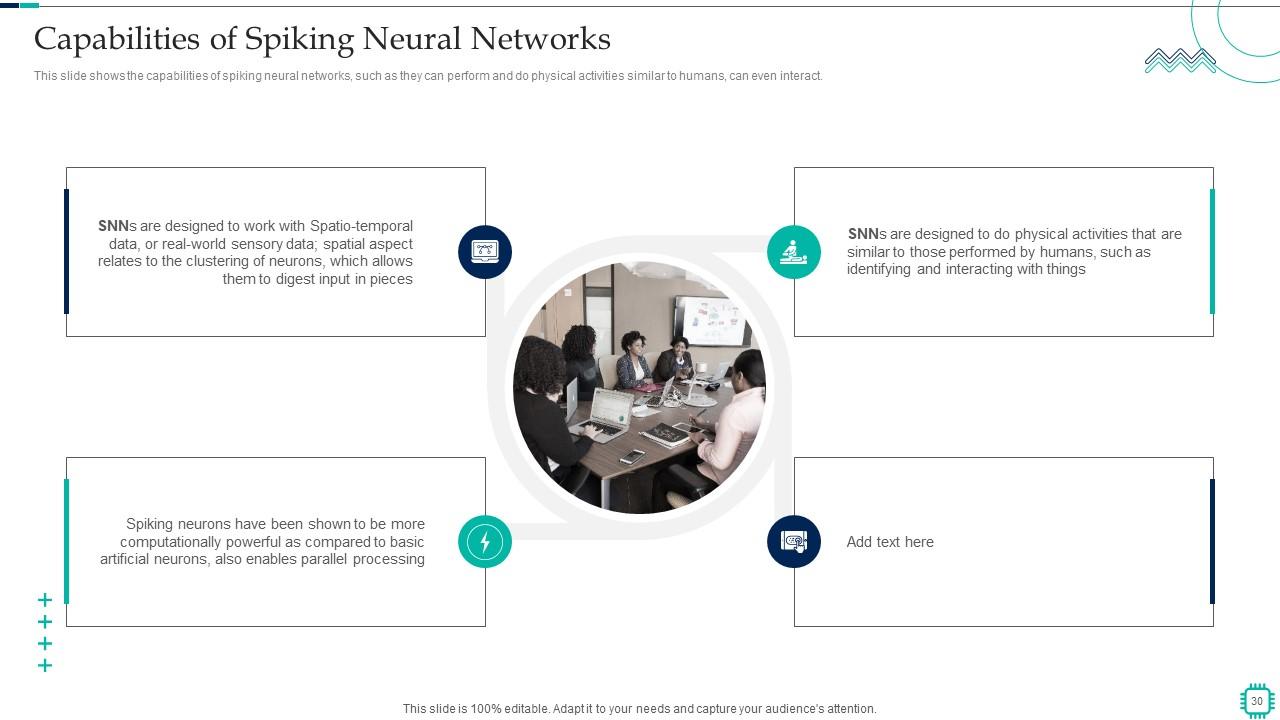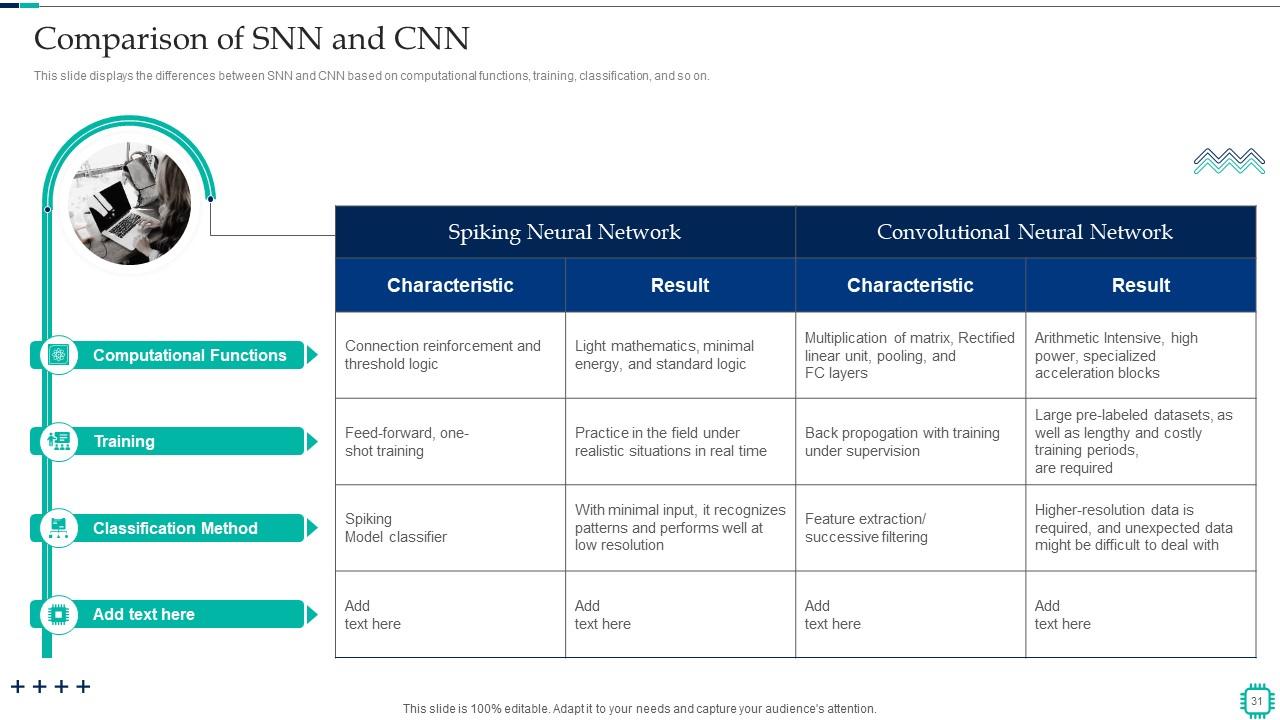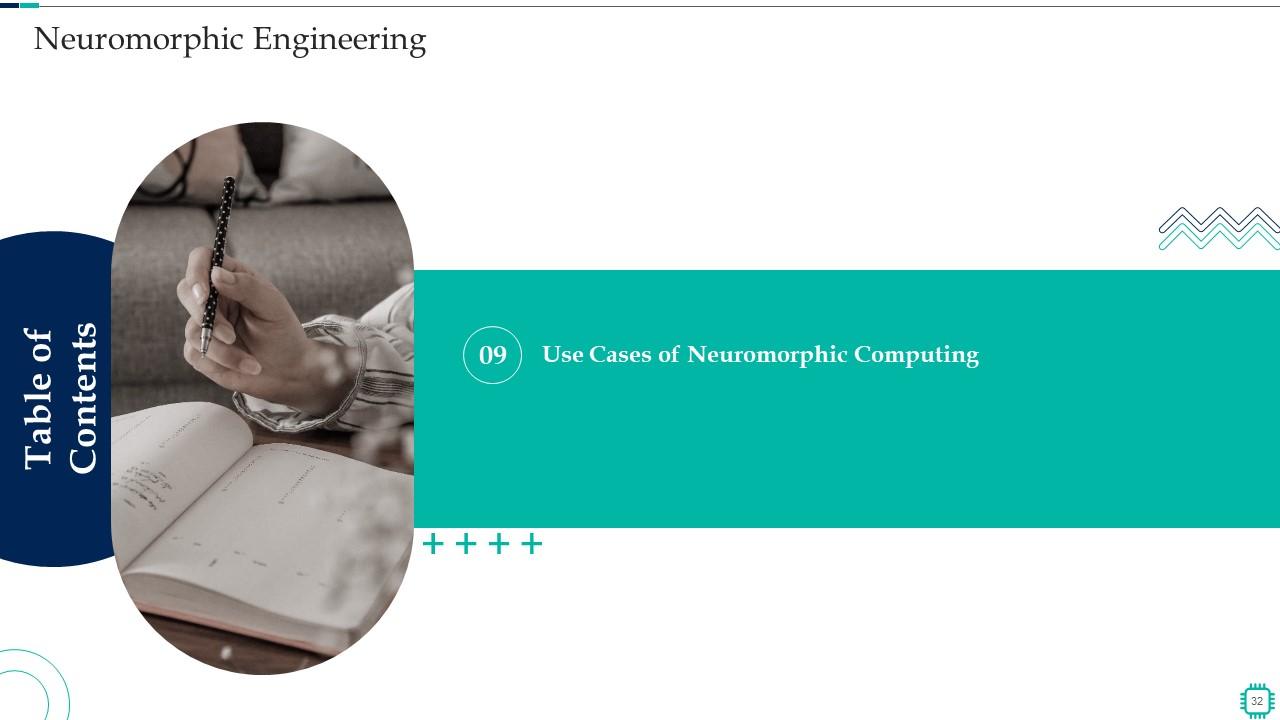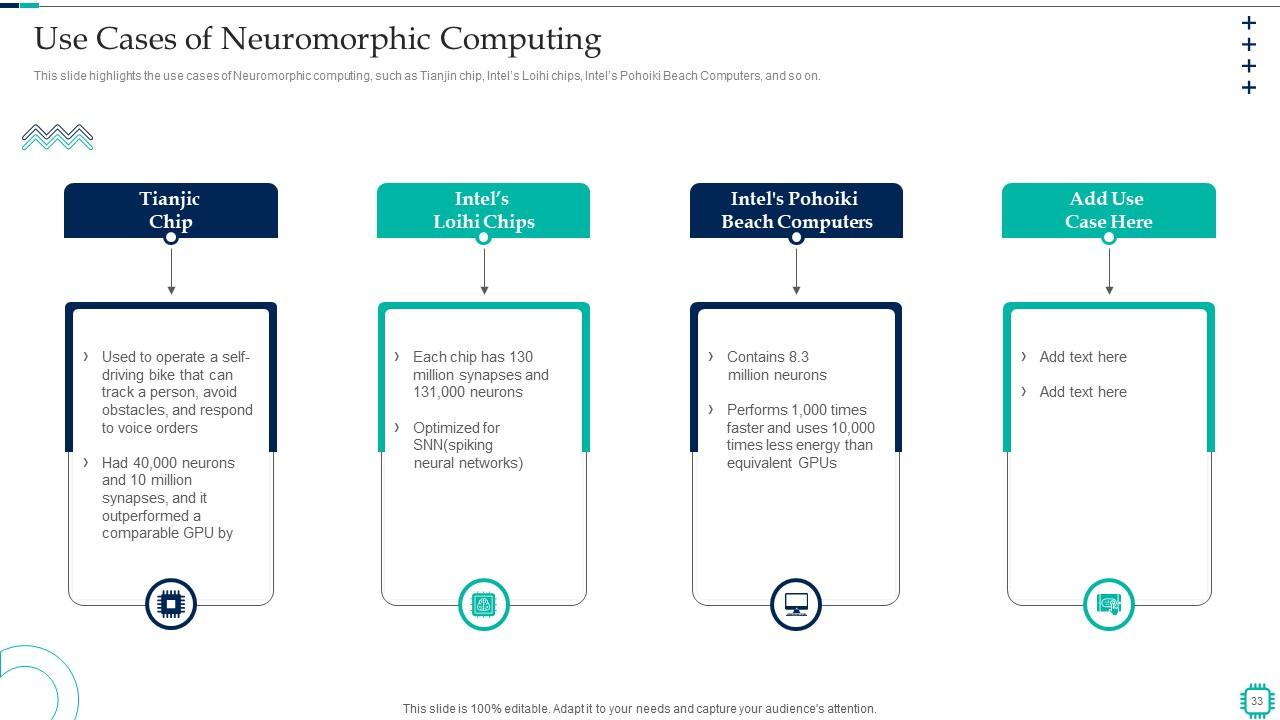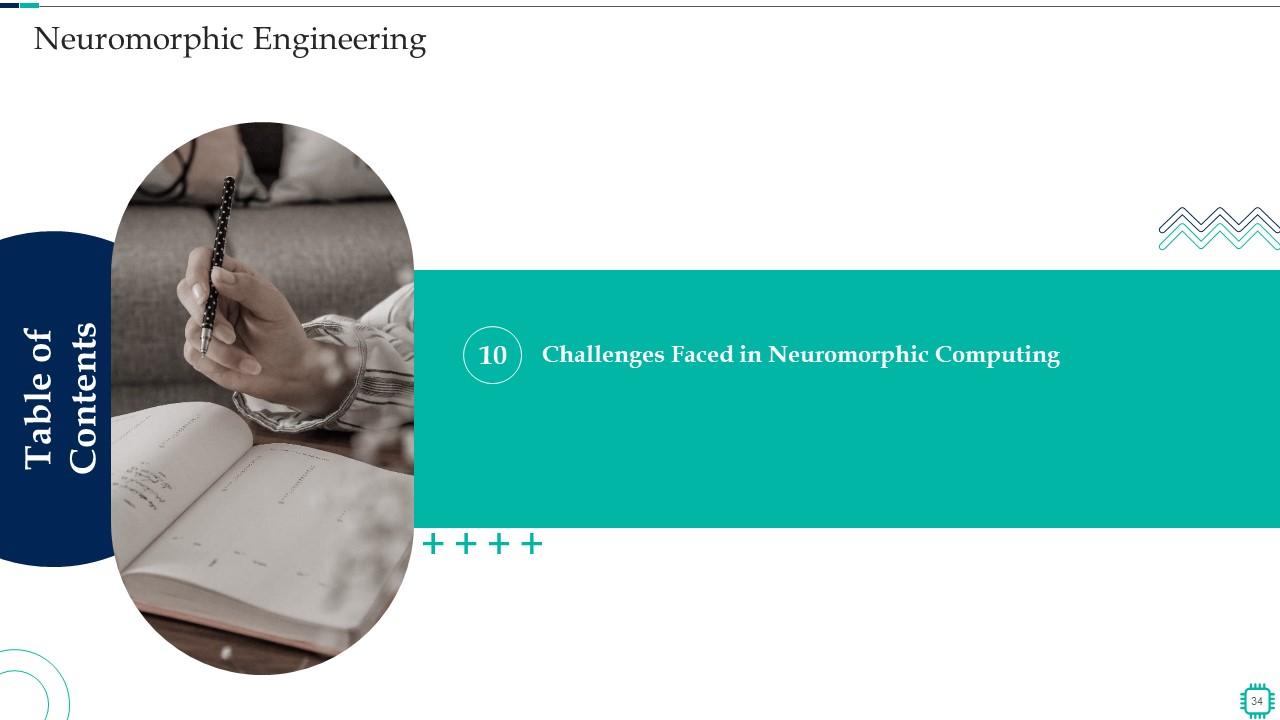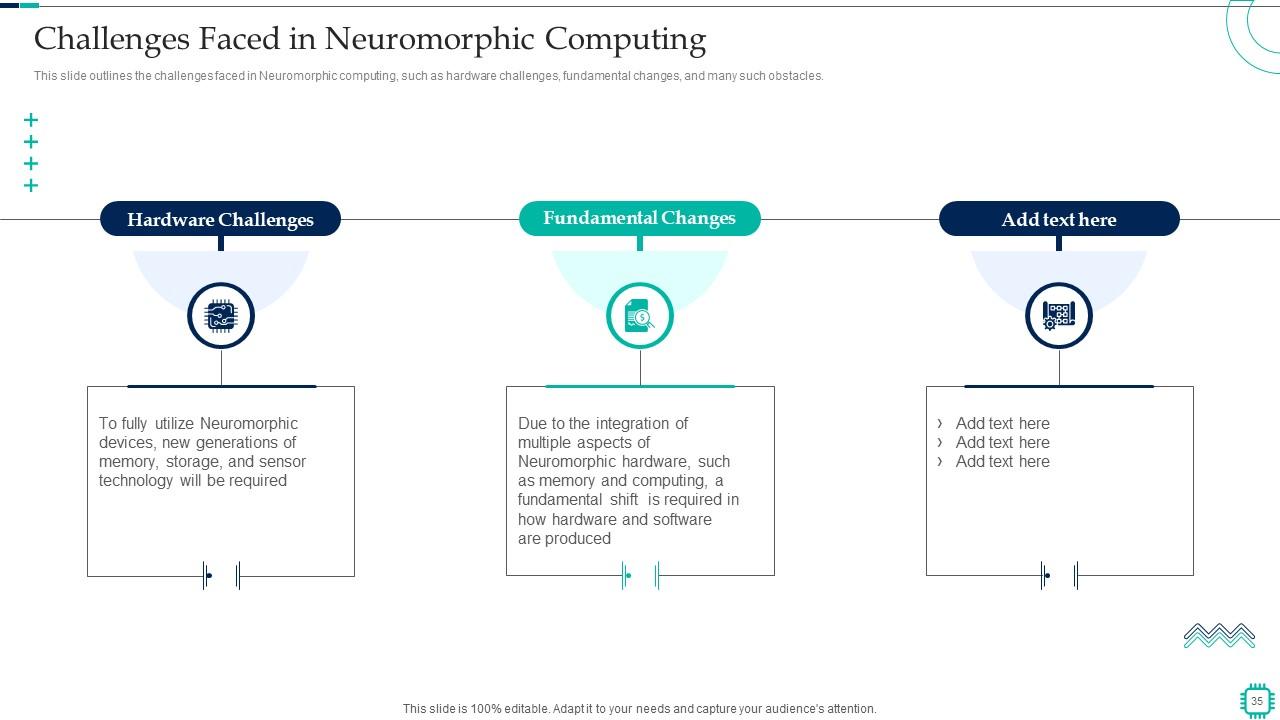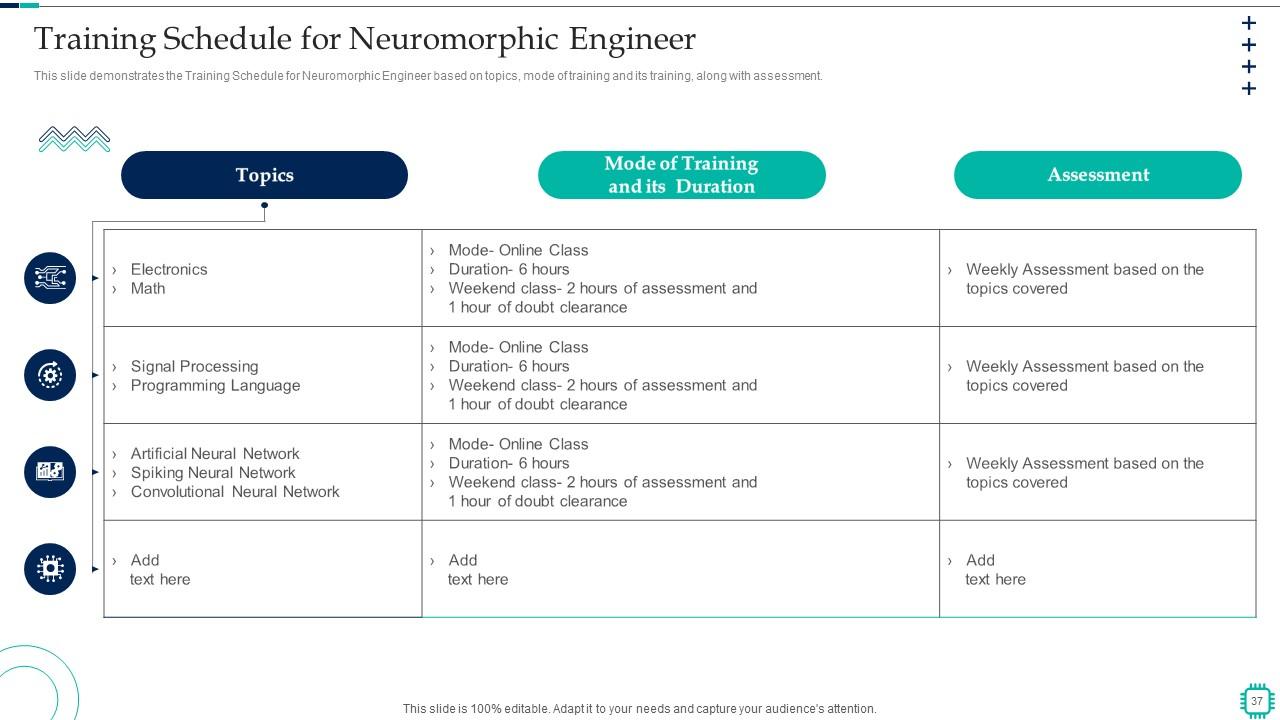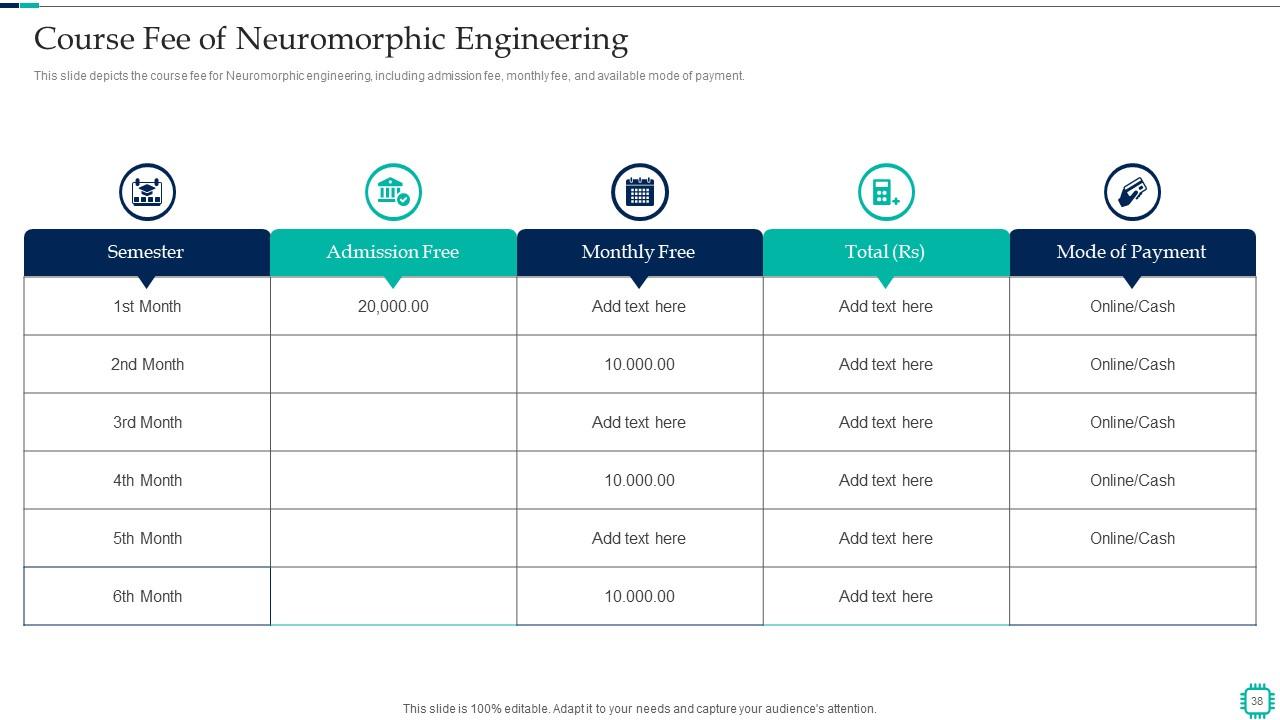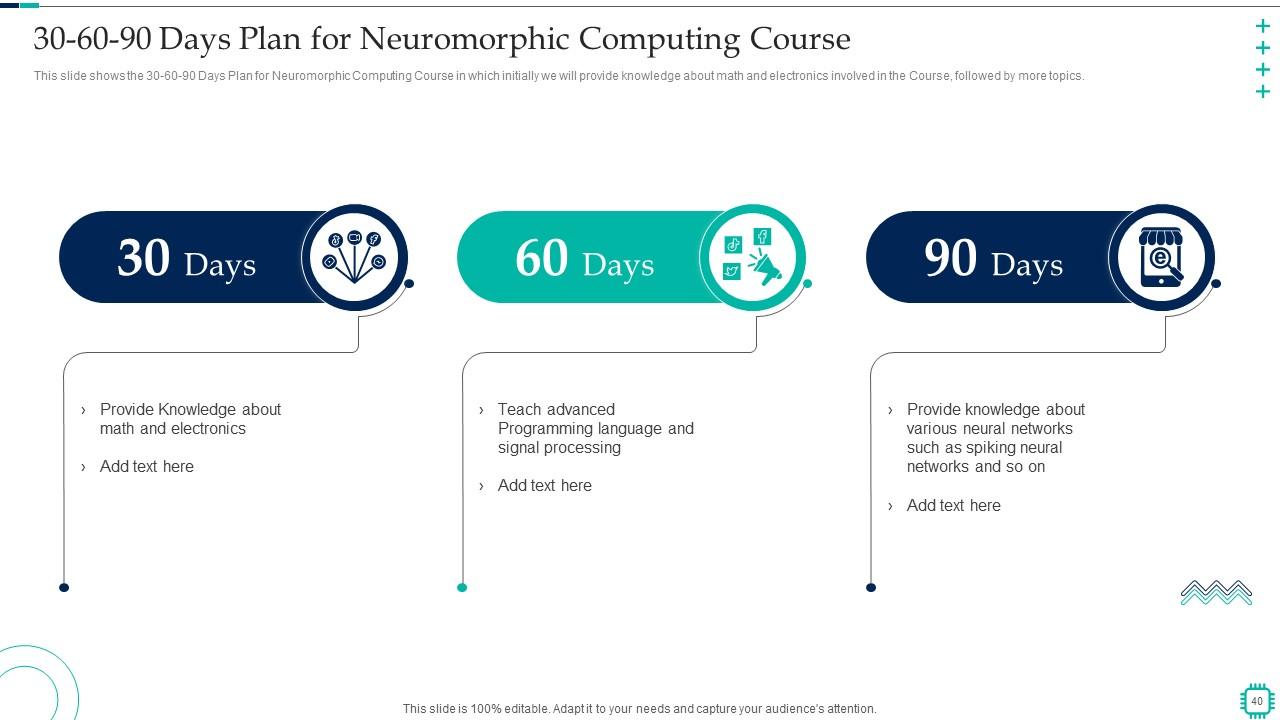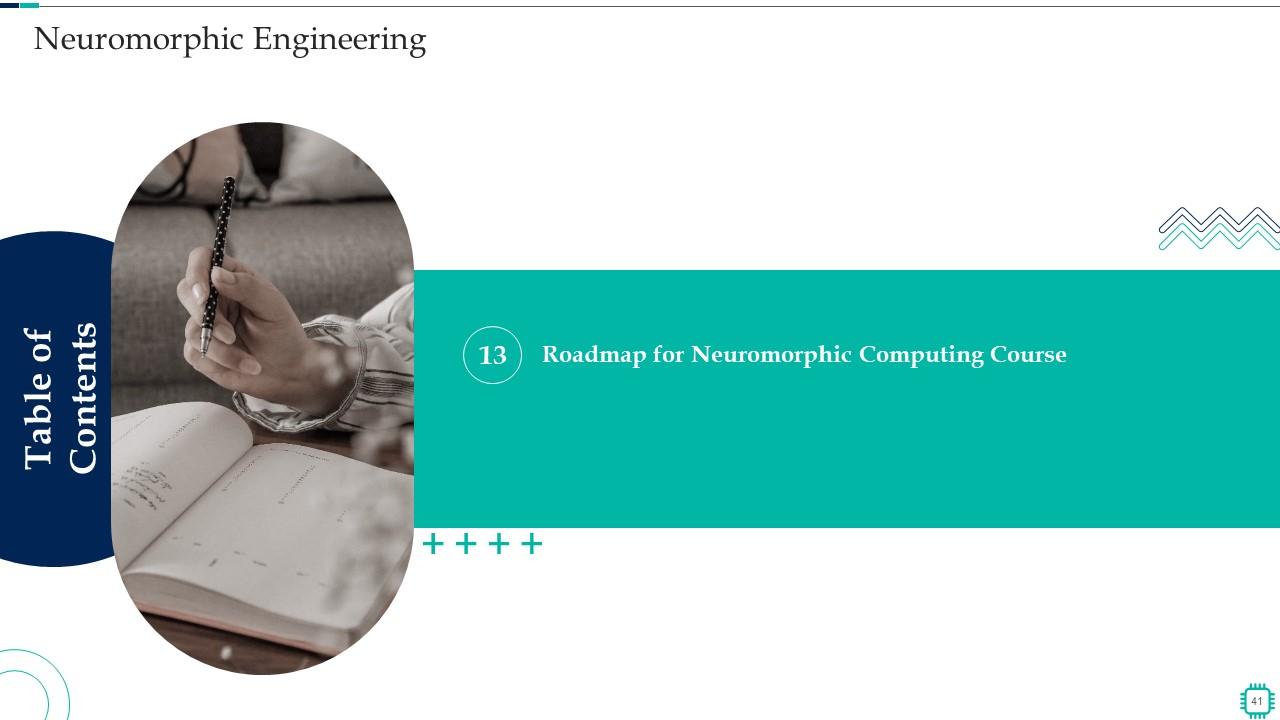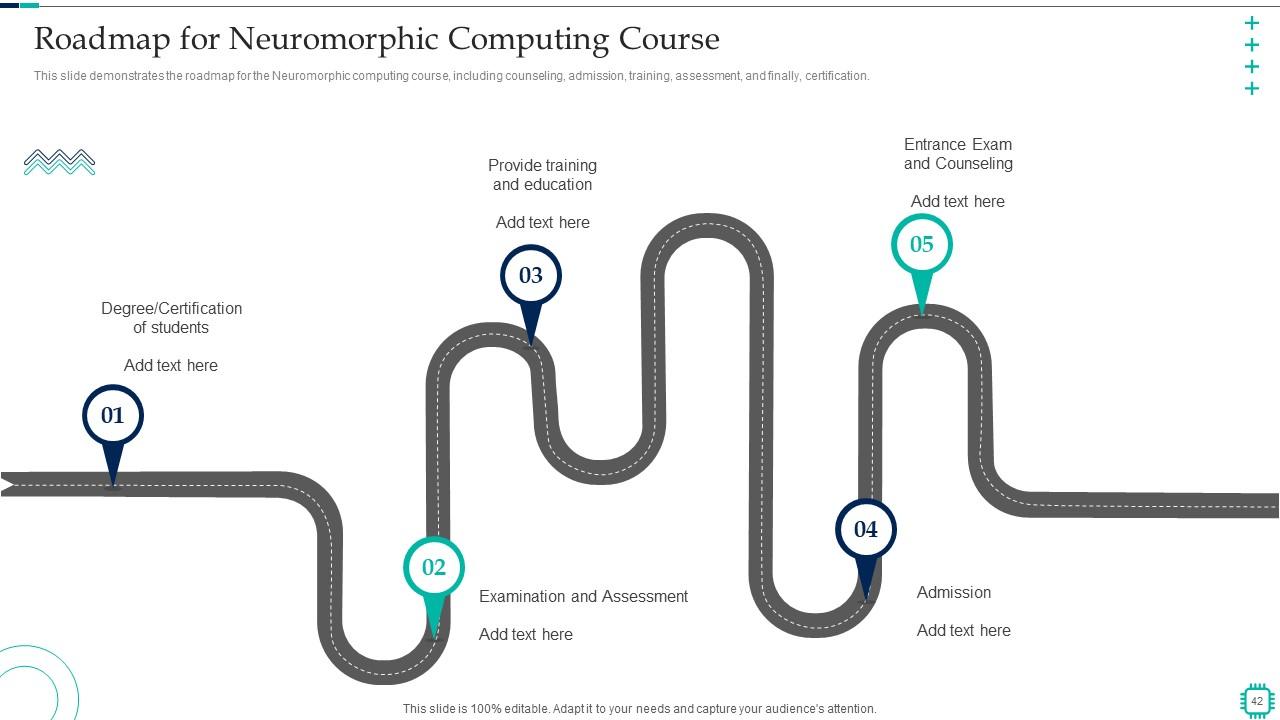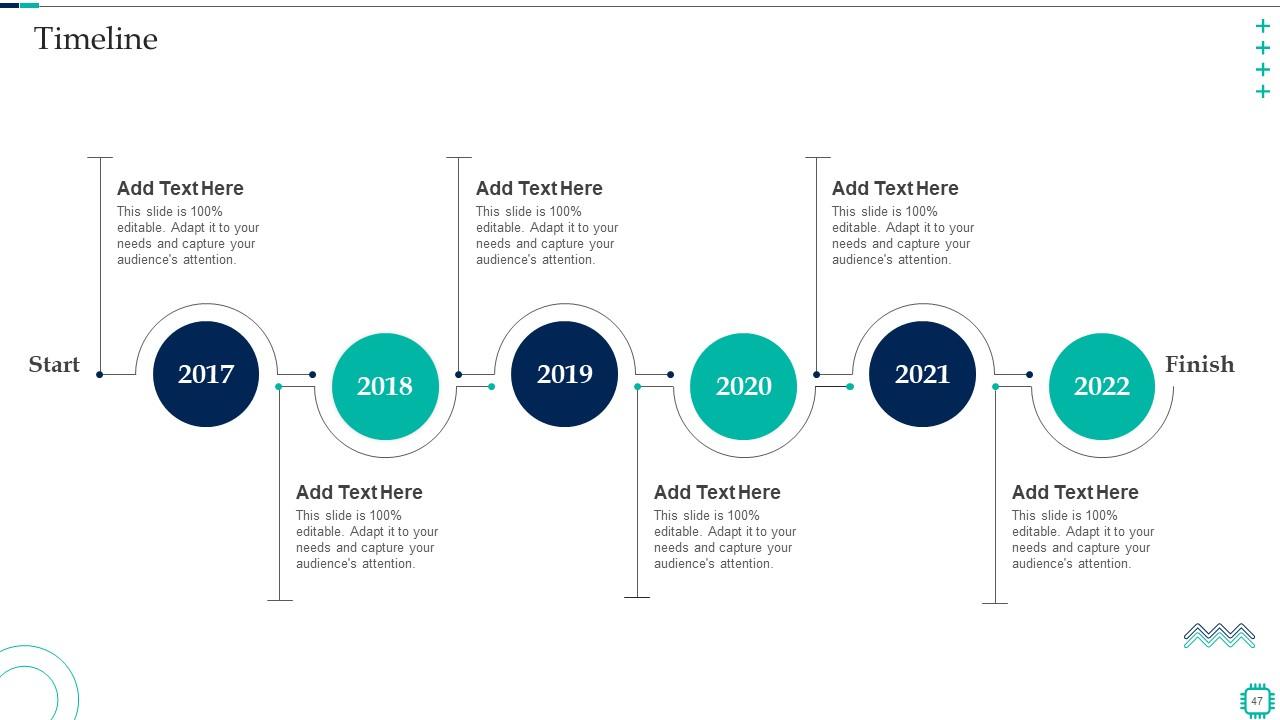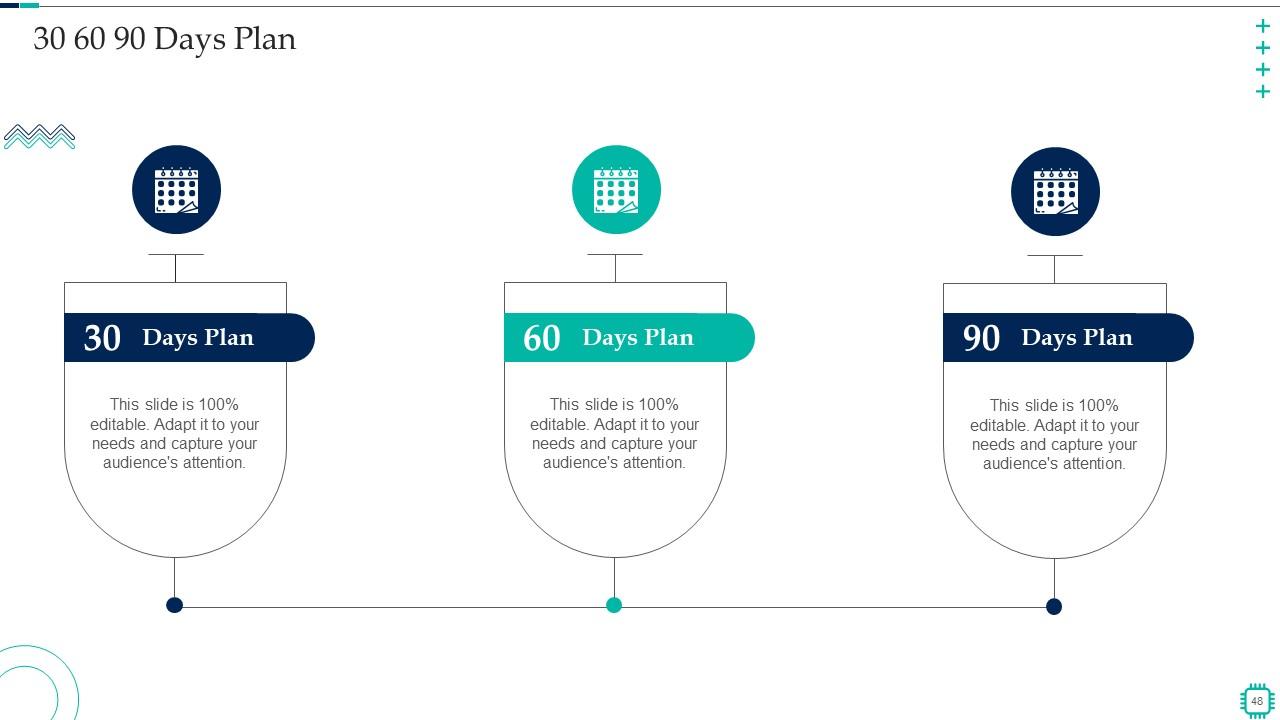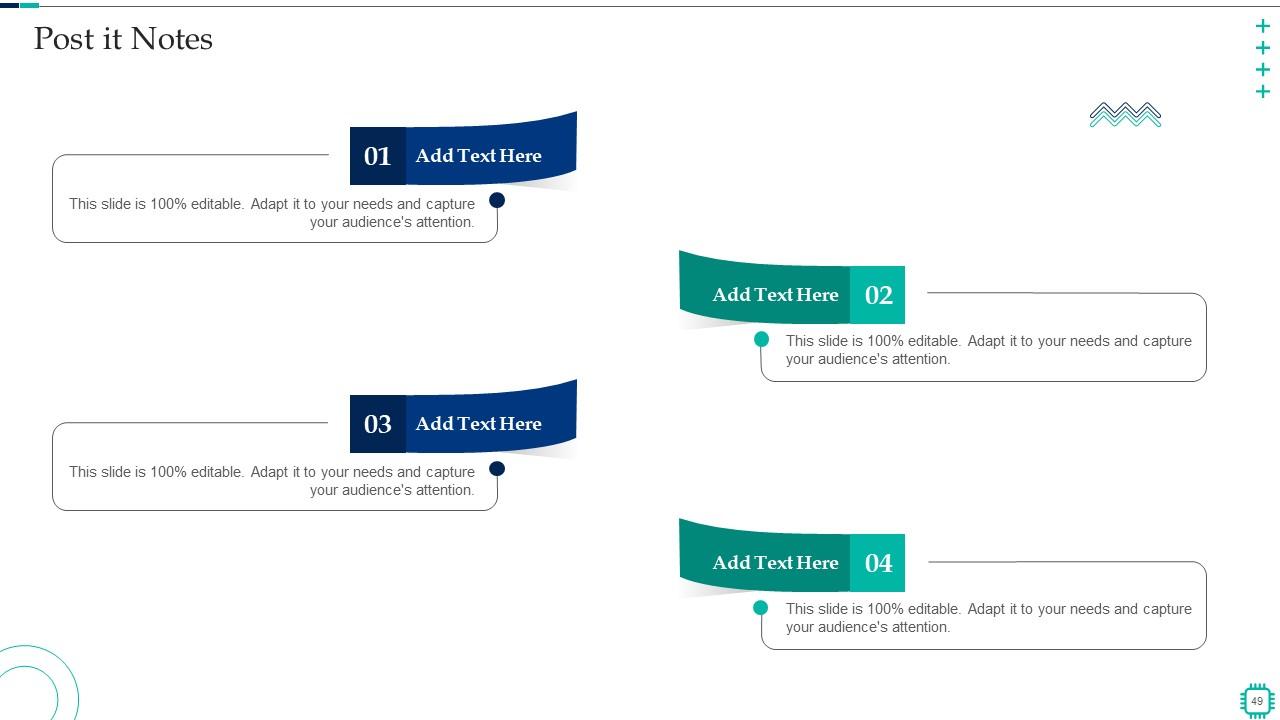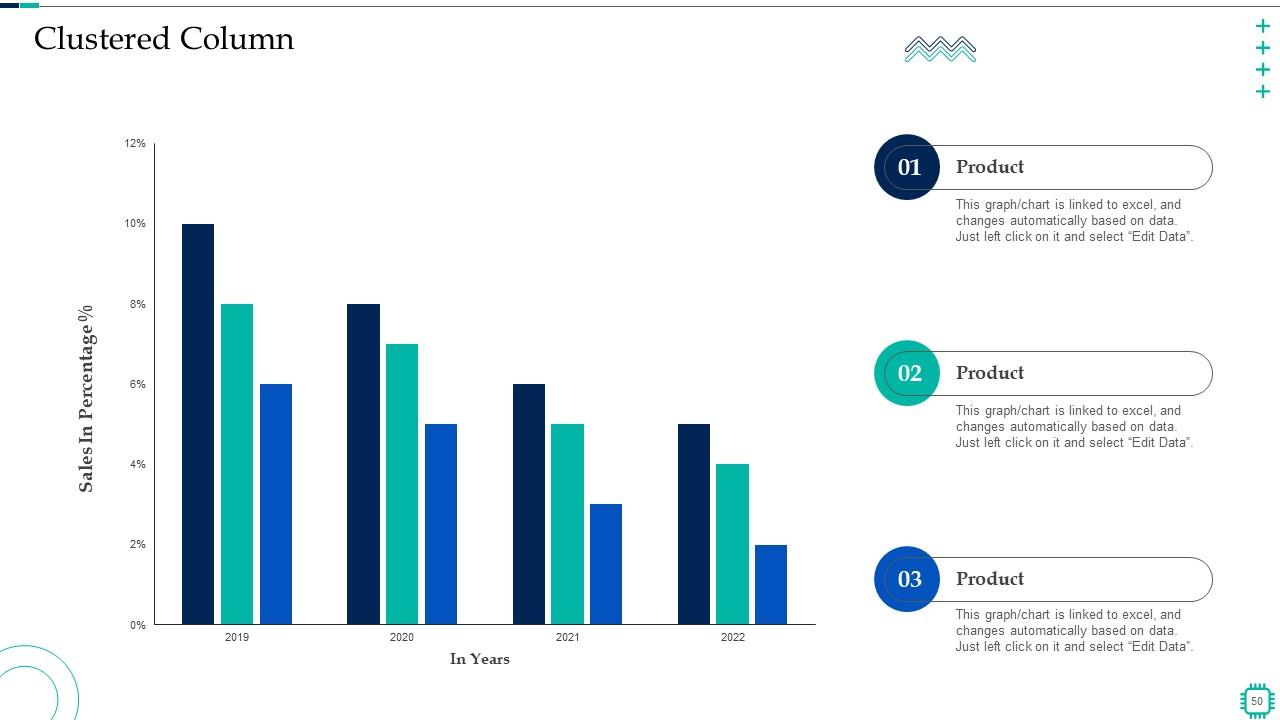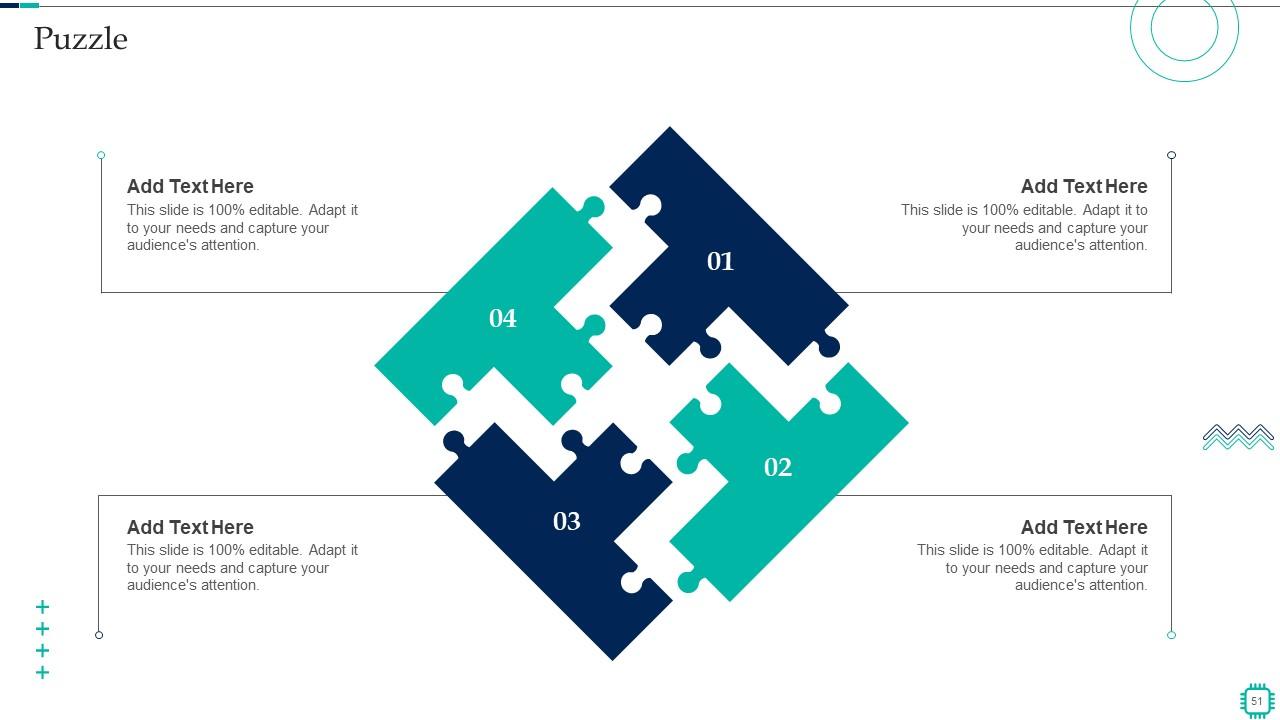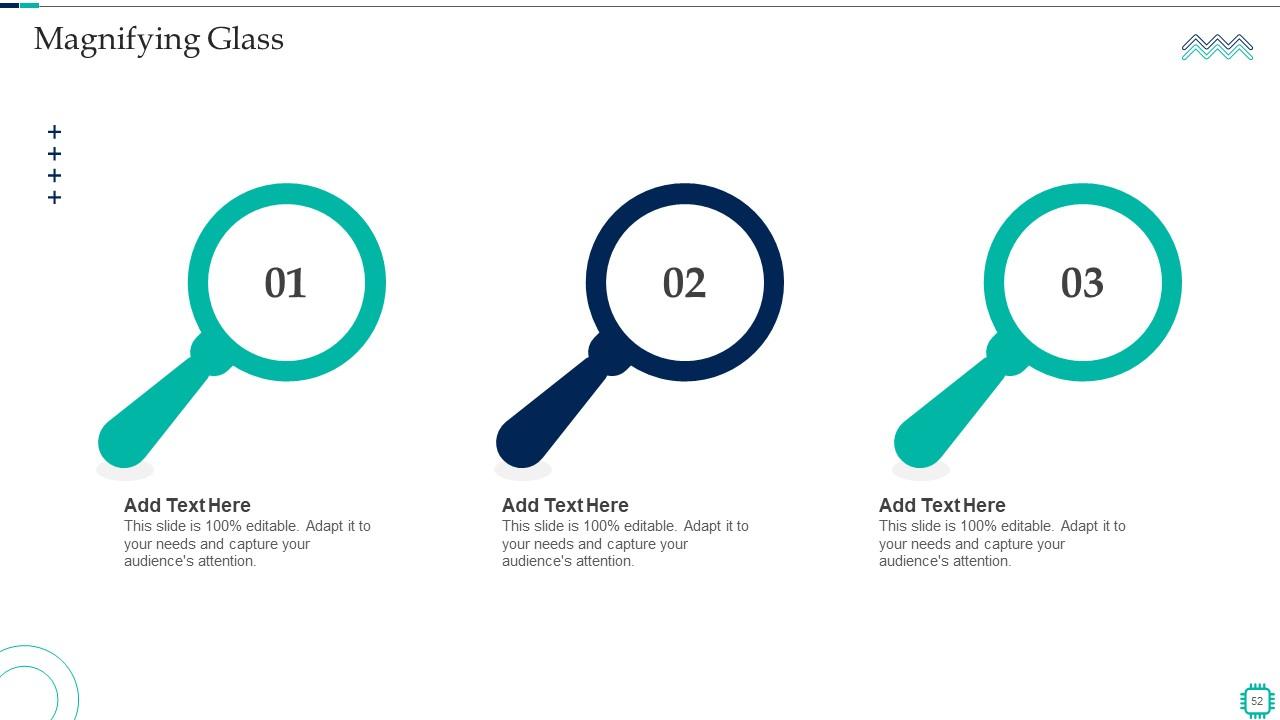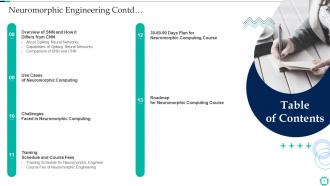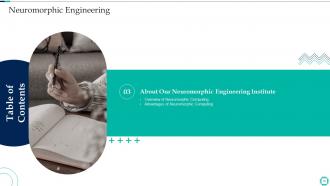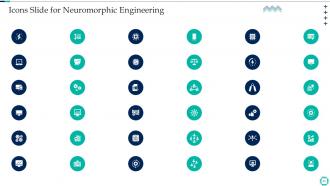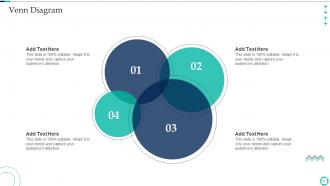Neuromorphic Engineering Powerpoint Presentation Slides
Neuromorphic computing simulates natural learning and aids in making decisions over time in response to learned patterns. Grab our professionally designed Neuromorphic Engineering template. It includes the primary education and skills required to be a Neuromorphic engineer. In this Neuromorphic computing PowerPoint presentation, we have covered the details of Neuromorphic computing and its various benefits in engineering. In addition, this PPT gives information about the working of Neuromorphic computing and the need for it. Moreover, this Neuromorphic computing presentation represents its five features and introduces Neuromorphic chips. Further, the template highlights the possibilities enabled by Neuromorphic Computing. Also, this module describes spiking neural networks SNN, their capabilities, and how it differs from Convolutional Neural Networks CNN and includes use cases of Neuromorphic computing. This PowerPoint presentation outlines the challenges and hurdles faced in Neuromorphic computing. Lastly, the Neuromorphic engineering deck caters to the training schedule and course fees of Neuromorphic engineering also, it comprises a 30-60-90-days plan and a roadmap for the course. Download it now.
- Google Slides is a new FREE Presentation software from Google.
- All our content is 100% compatible with Google Slides.
- Just download our designs, and upload them to Google Slides and they will work automatically.
- Amaze your audience with SlideTeam and Google Slides.
-
Want Changes to This PPT Slide? Check out our Presentation Design Services
- WideScreen Aspect ratio is becoming a very popular format. When you download this product, the downloaded ZIP will contain this product in both standard and widescreen format.
-

- Some older products that we have may only be in standard format, but they can easily be converted to widescreen.
- To do this, please open the SlideTeam product in Powerpoint, and go to
- Design ( On the top bar) -> Page Setup -> and select "On-screen Show (16:9)” in the drop down for "Slides Sized for".
- The slide or theme will change to widescreen, and all graphics will adjust automatically. You can similarly convert our content to any other desired screen aspect ratio.
Compatible With Google Slides

Get This In WideScreen
You must be logged in to download this presentation.
PowerPoint presentation slides
Deliver this complete deck to your team members and other collaborators. Encompassed with stylized slides presenting various concepts, this Neuromorphic Engineering Powerpoint Presentation Slides is the best tool you can utilize. Personalize its content and graphics to make it unique and thought-provoking. All the fifty four slides are editable and modifiable, so feel free to adjust them to your business setting. The font, color, and other components also come in an editable format making this PPT design the best choice for your next presentation. So, download now.
People who downloaded this PowerPoint presentation also viewed the following :
Content of this Powerpoint Presentation
Slide 1: This slide introduces Neuromorphic Engineering. State your company name and begin.
Slide 2: This slide states Agenda of the presentation.
Slide 3: This slide presents Table of Content for the presentation.
Slide 4: This is another slide continuing Table of Content for the presentation.
Slide 5: This slide highlights title for topics that are to be covered next in the template.
Slide 6: This slide shows About Our Neuromorphic Engineering Institute.
Slide 7: This slide highlights title for topics that are to be covered next in the template.
Slide 8: This slide presents Education Required to be an Neuromorphic Engineer.
Slide 9: This slide displays Skills Required to be a Neuromorphic Engineer.
Slide 10: This slide highlights title for topics that are to be covered next in the template.
Slide 11: This slide represents Overview of Neuromorphic Computing.
Slide 12: This slide showcases Advantages of Neuromorphic Computing.
Slide 13: This slide highlights title for topics that are to be covered next in the template.
Slide 14: This slide shows How does Neuromorphic Computing Work?.
Slide 15: This slide presents Why do You Need Neuromorphic Systems?.
Slide 16: This slide highlights title for topics that are to be covered next in the template.
Slide 17: This slide displays Rapid Response System Feature of Neuromorphic Computing.
Slide 18: This slide shows the second feature, low power consumption.
Slide 19: This slide represents Higher Adaptability as a Feature of Neuromorphic Computing.
Slide 20: This slide showcases Fast-paced Learning : Feature of Neuromorphic Computing.
Slide 21: This slide shows Mobile Architecture as a Feature of Neuromorphic Computing.
Slide 22: This slide highlights title for topics that are to be covered next in the template.
Slide 23: This slide explains the Neuromorphic chip, which has the same structure as neurons in the brain.
Slide 24: This slide highlights the advantages of Neuromorphic chips.
Slide 25: This slide highlights title for topics that are to be covered next in the template.
Slide 26: This slide shows Efficient Implementation of Complex AI Algorithms.
Slide 27: This slide presents Energy-Efficient Super-Computers.
Slide 28: This slide highlights title for topics that are to be covered next in the template.
Slide 29: This slide provides an overview of spiking neural networks, which is a type of neuron.
Slide 30: This slide presents Capabilities of Spiking Neural Networks.
Slide 31: This slide displays the differences between SNN and CNN based on computational functions.
Slide 32: This slide highlights title for topics that are to be covered next in the template.
Slide 33: This slide represents Use Cases of Neuromorphic Computing.
Slide 34: This slide highlights title for topics that are to be covered next in the template.
Slide 35: This slide showcases Challenges Faced in Neuromorphic Computing.
Slide 36: This slide highlights title for topics that are to be covered next in the template.
Slide 37: This slide shows Training Schedule for Neuromorphic Engineer.
Slide 38: This slide presents Course Fee of Neuromorphic Engineering.
Slide 39: This slide highlights title for topics that are to be covered next in the template.
Slide 40: This slide displays 30-60-90 Days Plan for Neuromorphic Computing Course.
Slide 41: This slide highlights title for topics that are to be covered next in the template.
Slide 42: This slide represents Roadmap for Neuromorphic Computing Course.
Slide 43: This slide contains all the icons used in this presentation.
Slide 44: This slide is titled as Additional Slides for moving forward.
Slide 45: This is Our Team slide with names and designation.
Slide 46: This is About Us slide to show company specifications etc.
Slide 47: This is a Timeline slide. Show data related to time intervals here.
Slide 48: This slide provides 30 60 90 Days Plan with text boxes.
Slide 49: This slide shows Post It Notes. Post your important notes here.
Slide 50: This slide provides Clustered Column chart with two products comparison.
Slide 51: This slide contains Puzzle with related icons and text.
Slide 52: This slide showcases Magnifying Glass to highlight information, specifications etc
Slide 53: This slide depicts Venn diagram with text boxes.
Slide 54: This is a Thank You slide with address, contact numbers and email address.
Neuromorphic Engineering Powerpoint Presentation Slides with all 59 slides:
Use our Neuromorphic Engineering Powerpoint Presentation Slides to effectively help you save your valuable time. They are readymade to fit into any presentation structure.
FAQs
Neuromorphic computing is a type of computing that is modelled after the human brain's neural structure and functions. It uses artificial neural networks to process information, allowing for rapid response and efficient computation. This type of computing relies on parallel processing and adaptive learning to achieve its goals.
Neuromorphic systems offer several advantages, including rapid response times, low power consumption, higher adaptability, fast-paced learning, and mobile architecture. These features make it ideal for applications where real-time processing and low energy consumption are critical, such as robotics, autonomous vehicles, and Internet of Things (IoT) devices.
A neuromorphic chip is a microchip designed to simulate the functions of biological neurons. These chips have the same structure as neurons in the brain and can process information much faster and more efficiently than traditional computer chips. Neuromorphic chips offer several advantages, including low power consumption, high processing speeds, and the ability to perform complex computations efficiently.
Spiking neural networks (SNNs) are a type of neural network modelled after the brain's synapses and neurons. They use spike trains to transmit information and are particularly useful for pattern recognition and signal processing tasks. SNNs have the ability to adapt to new stimuli, learn from experience, and process information in real time.
Neuromorphic computing faces several challenges, including the need for specialized hardware and software, difficulties in designing efficient algorithms, and the need for large amounts of data to train neural networks. Additionally, the complexity of neuromorphic systems can make them difficult to understand and control, requiring a high degree of expertise to operate effectively.
-
The PPTs are extremely simple to modify. Thank you for providing the slides that are ready to be used. They assist me in saving a lot of time.
-
They saved me a lot of time because they had exactly what I was looking for. Couldn’t be happier!



